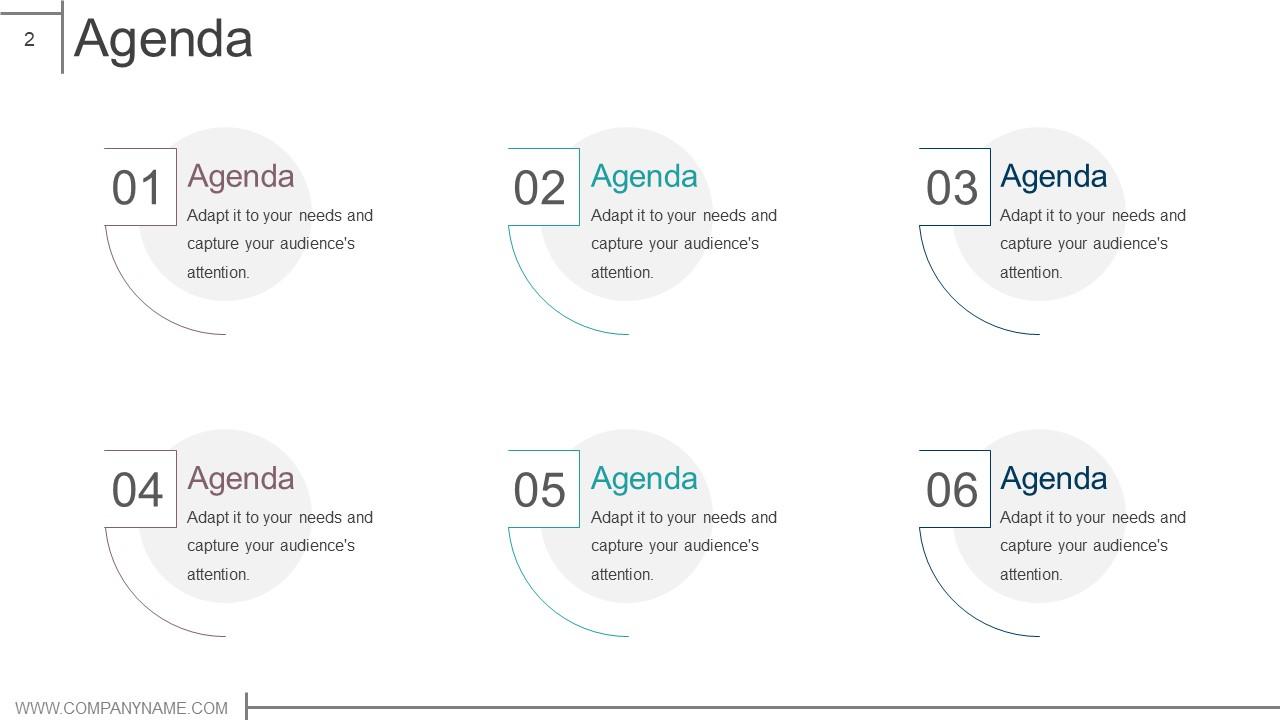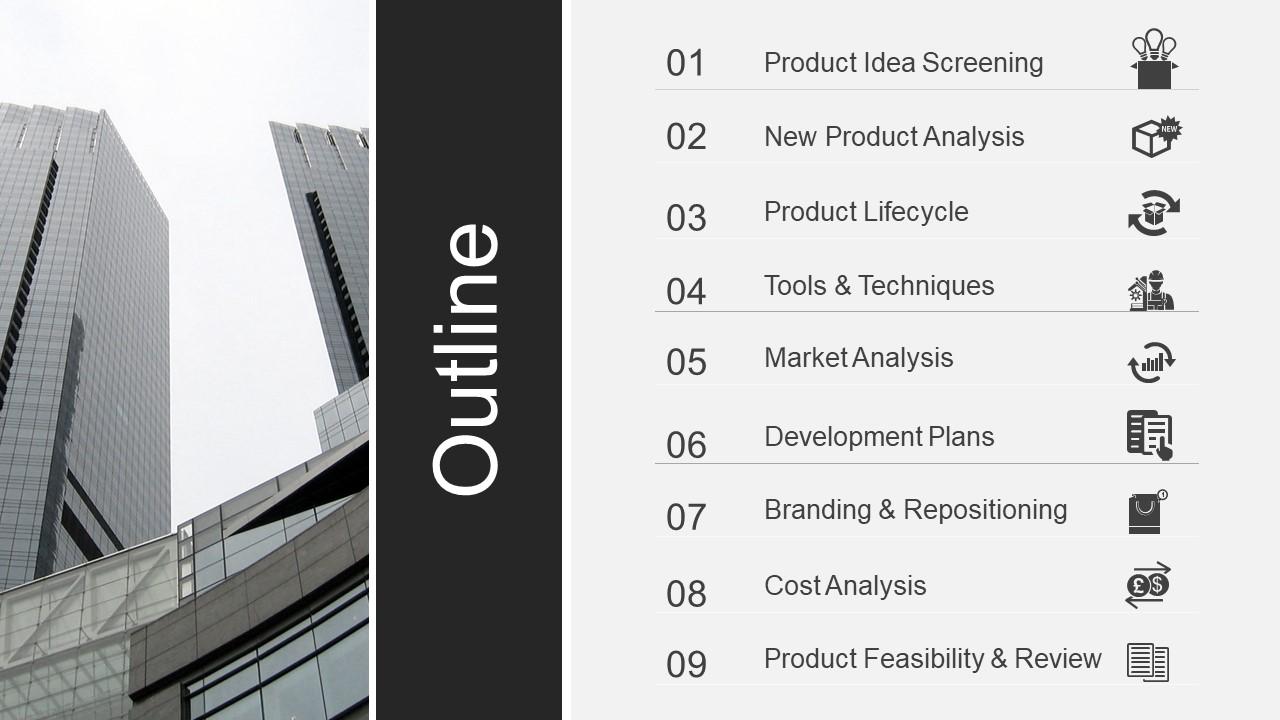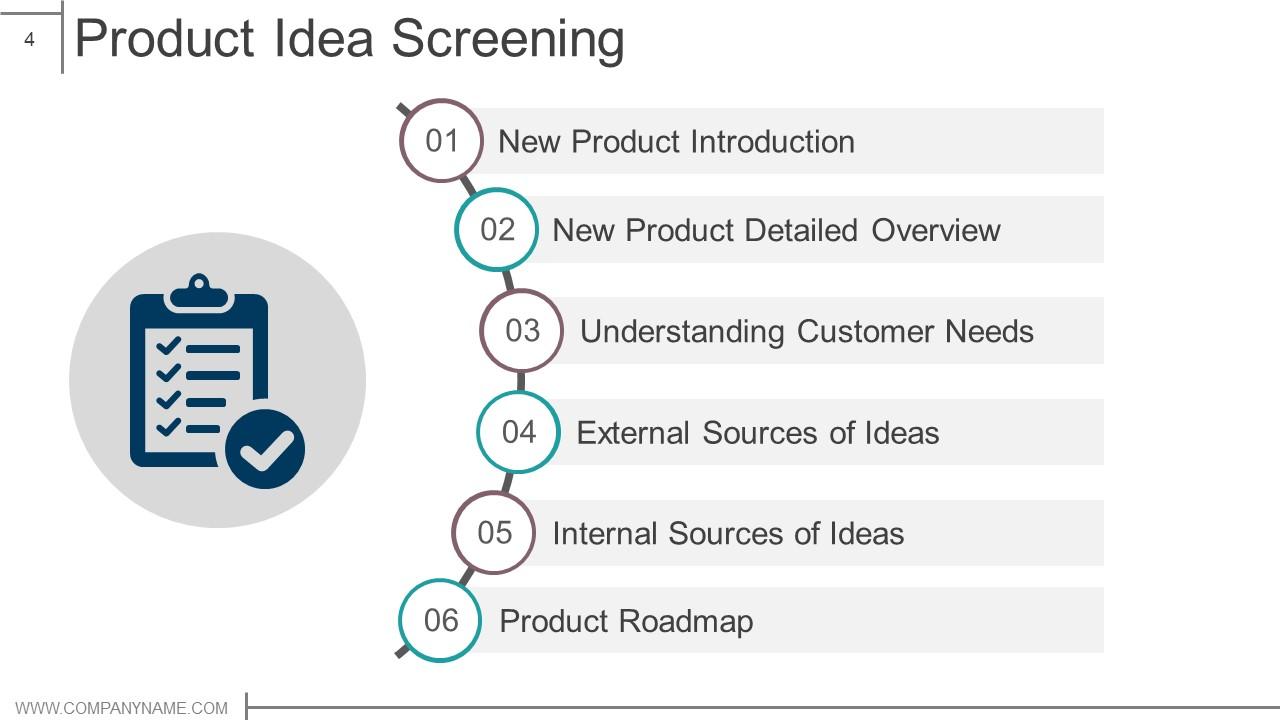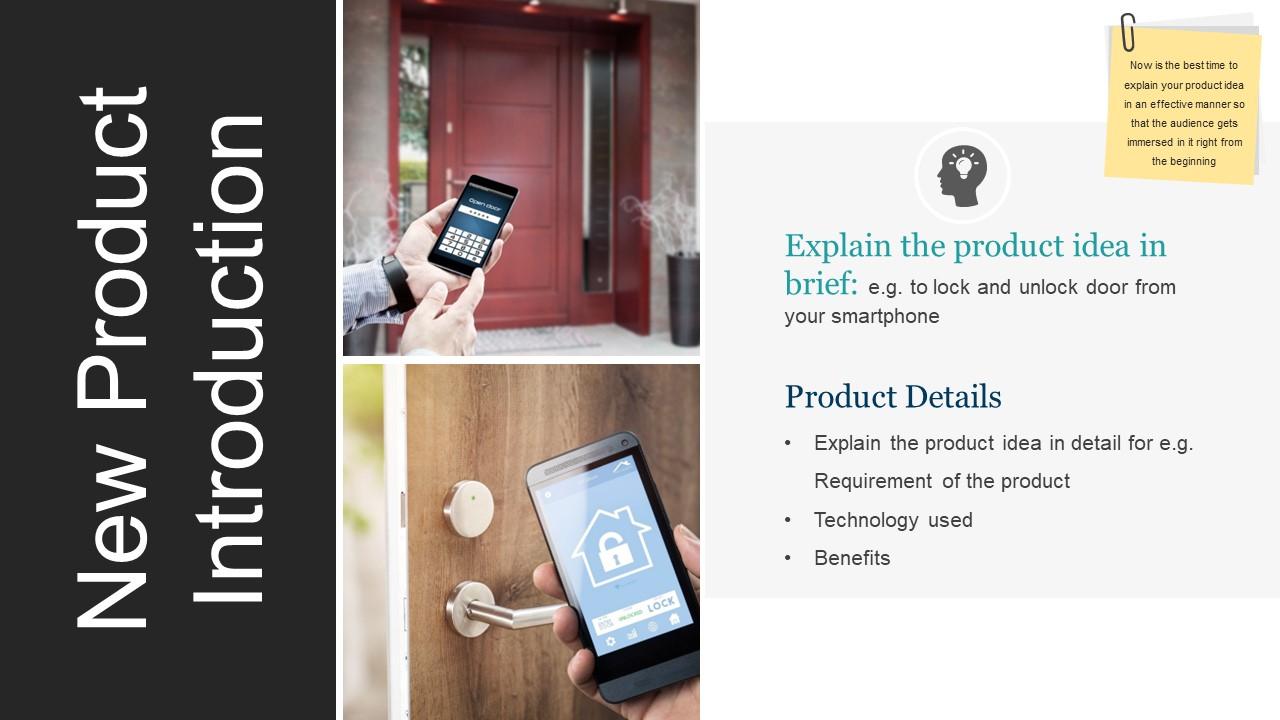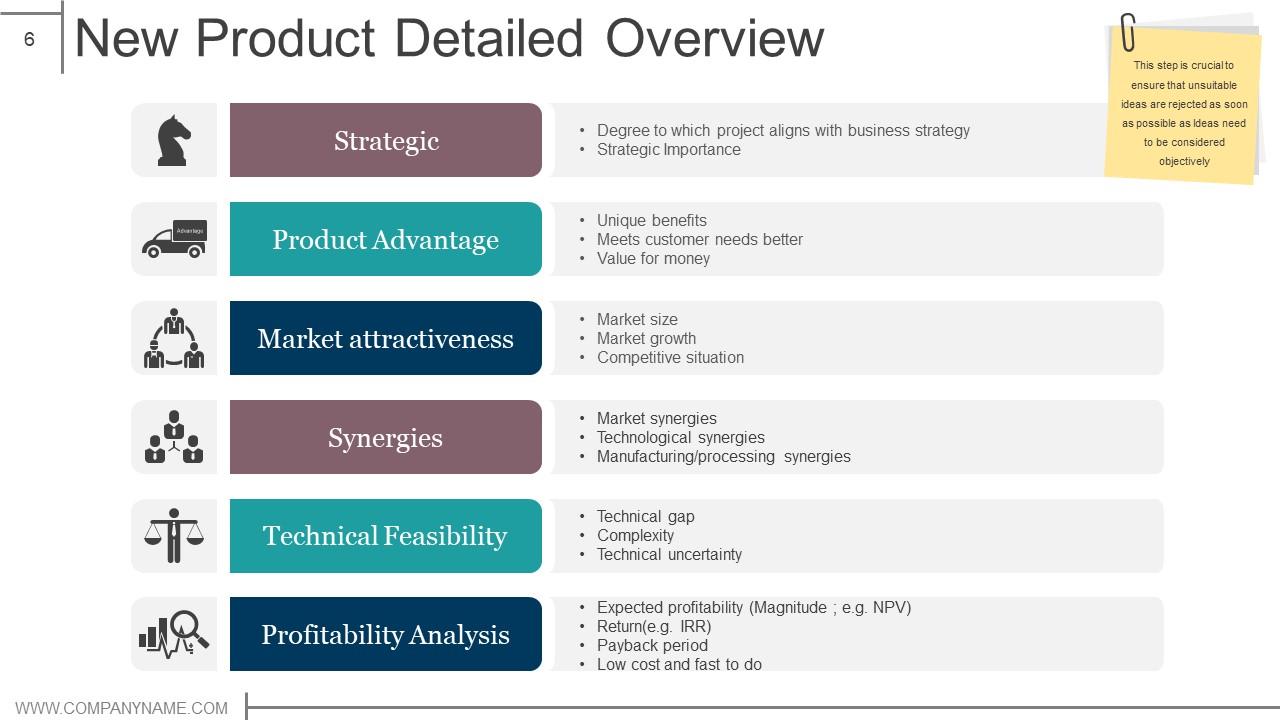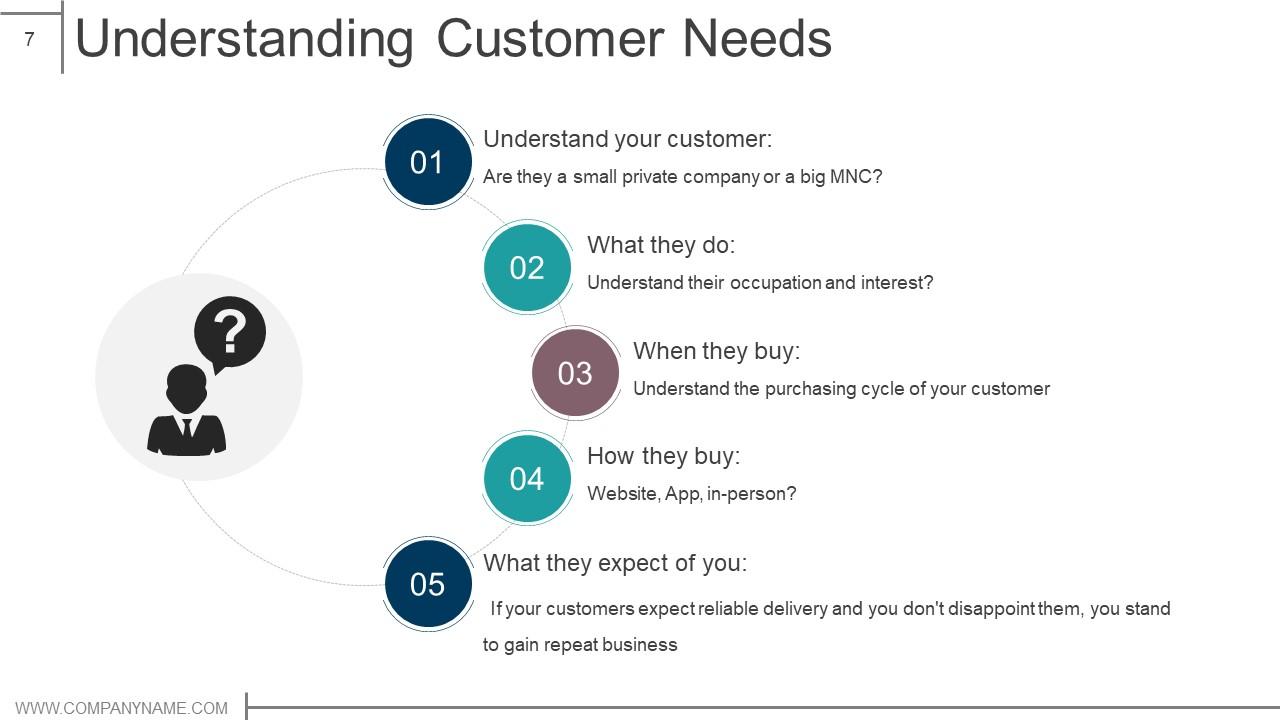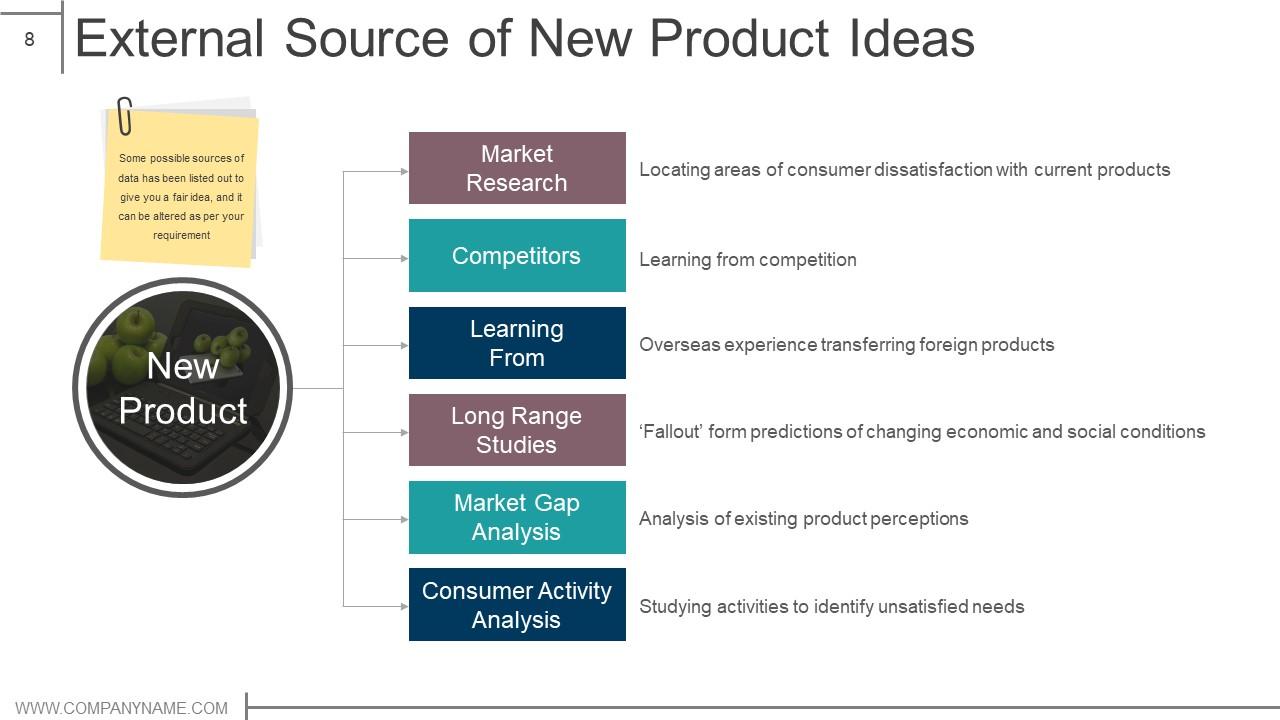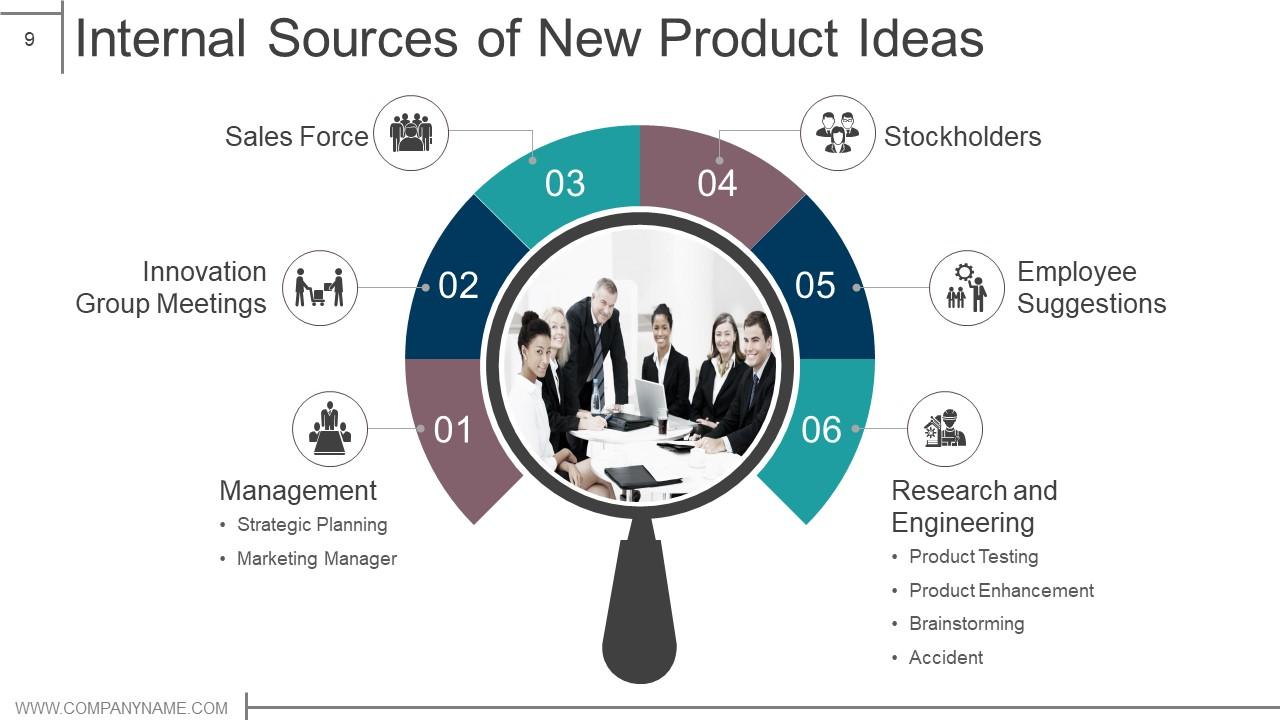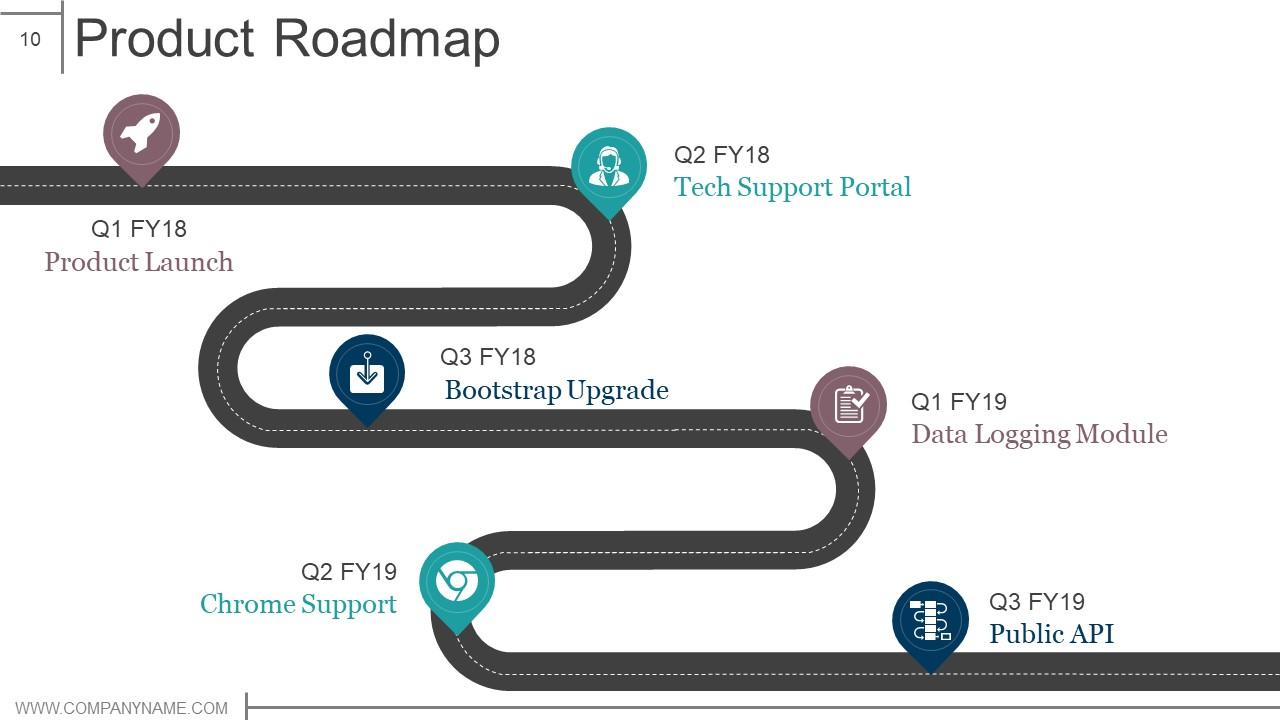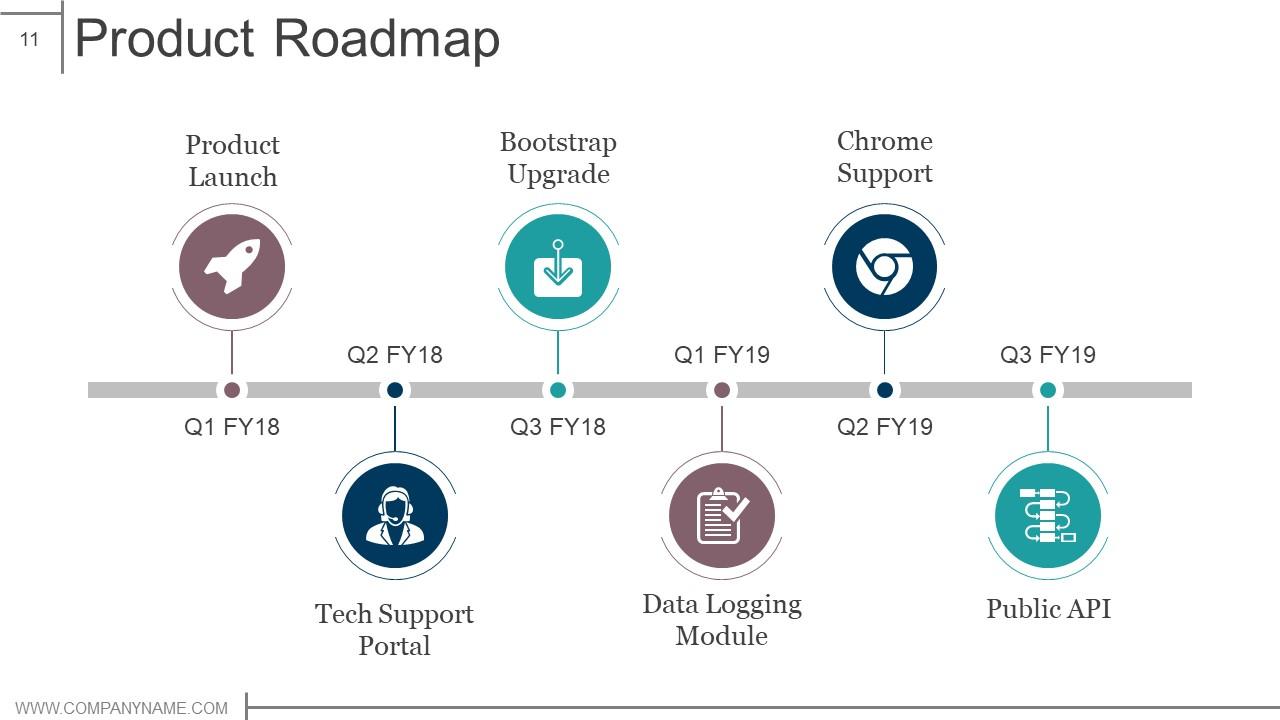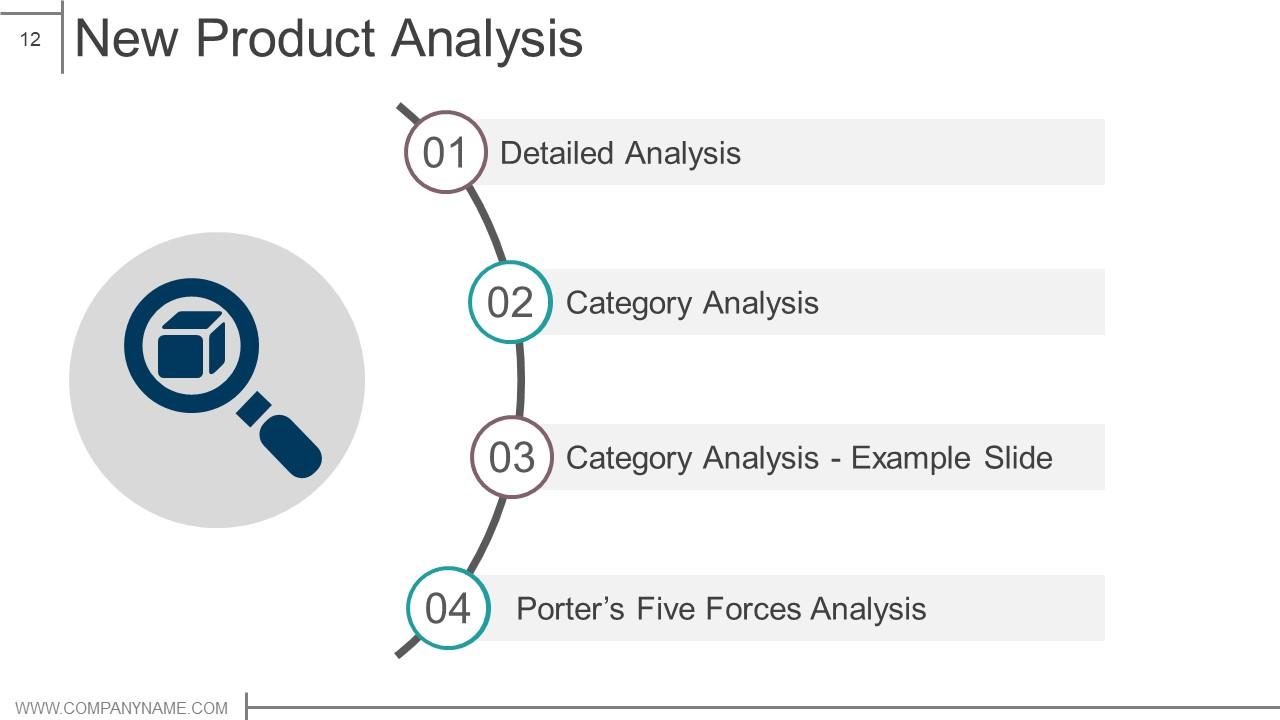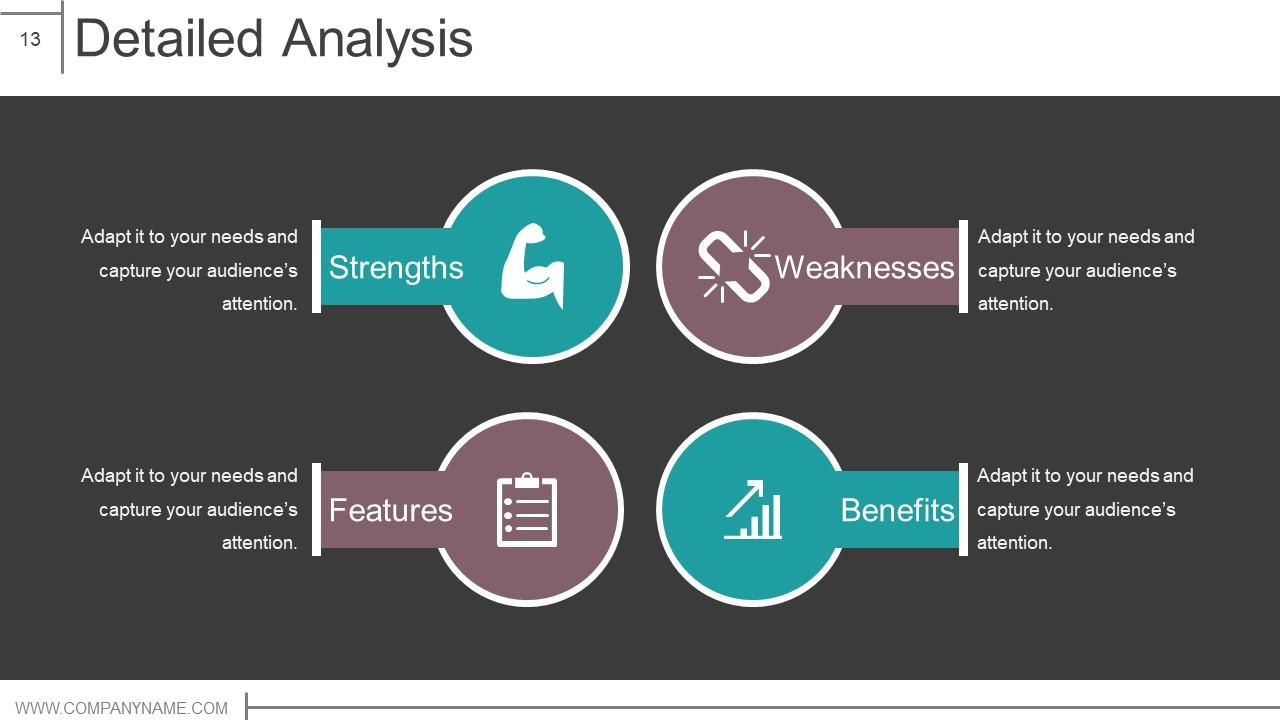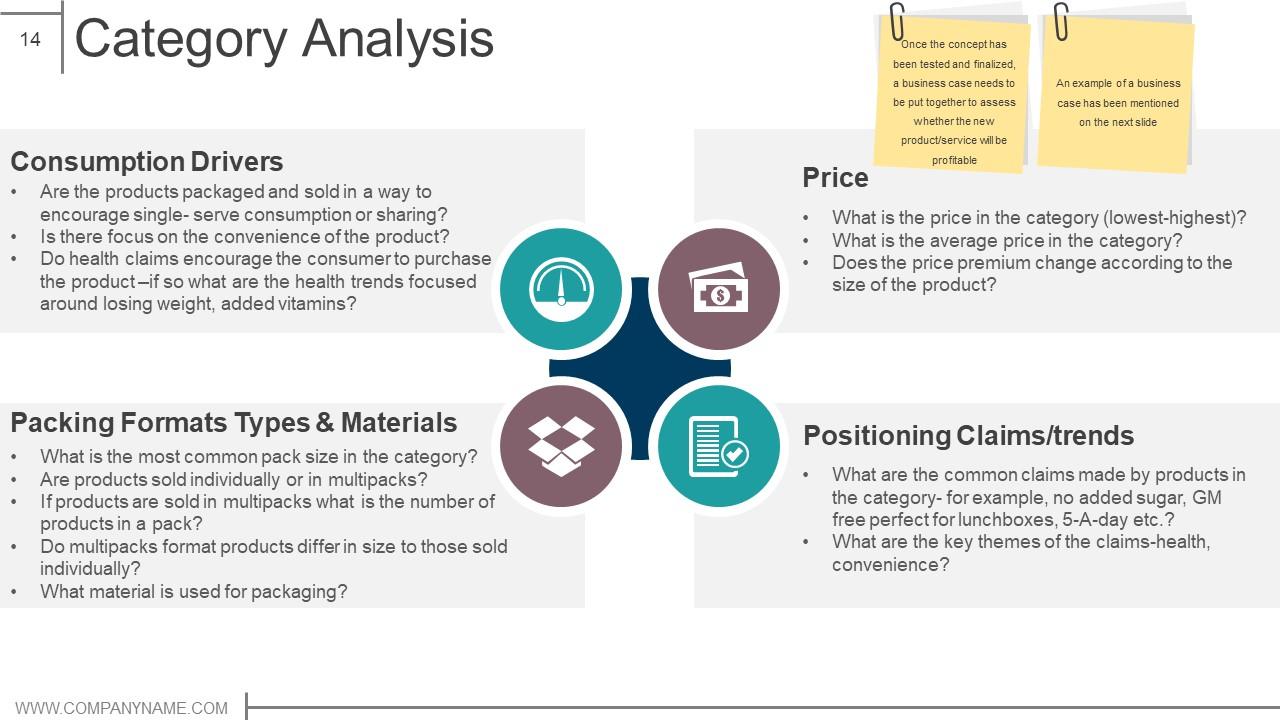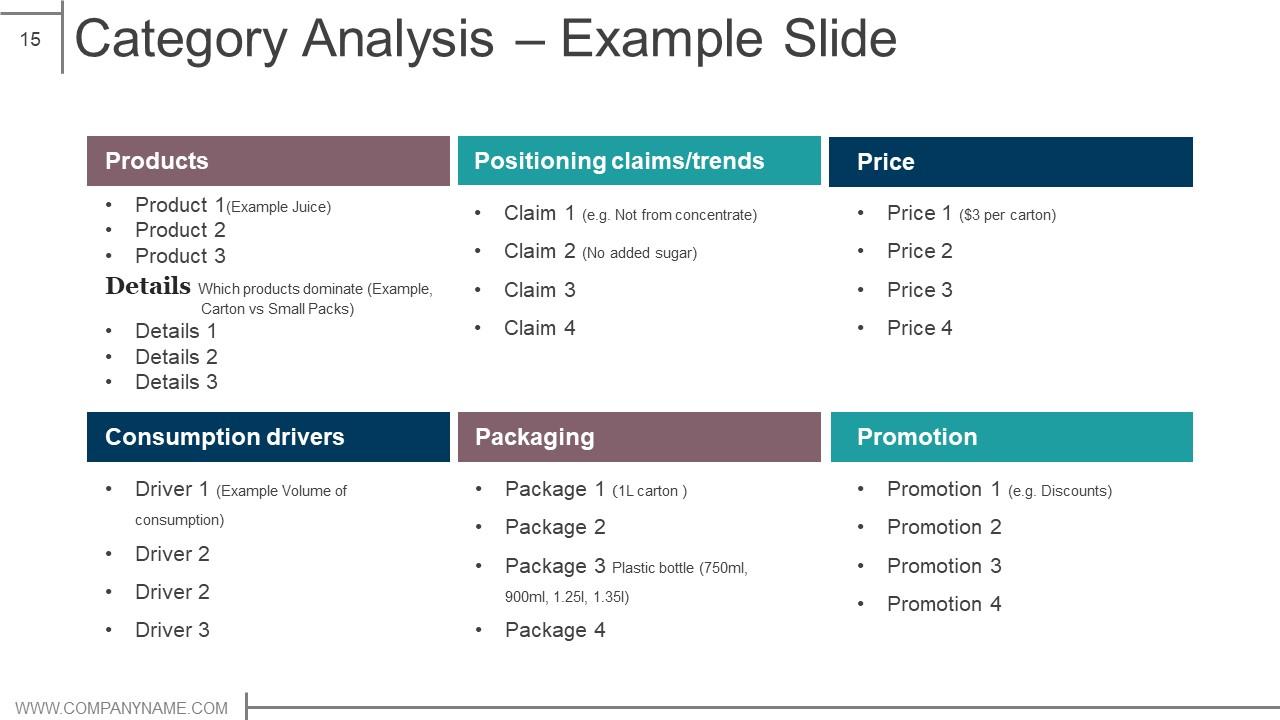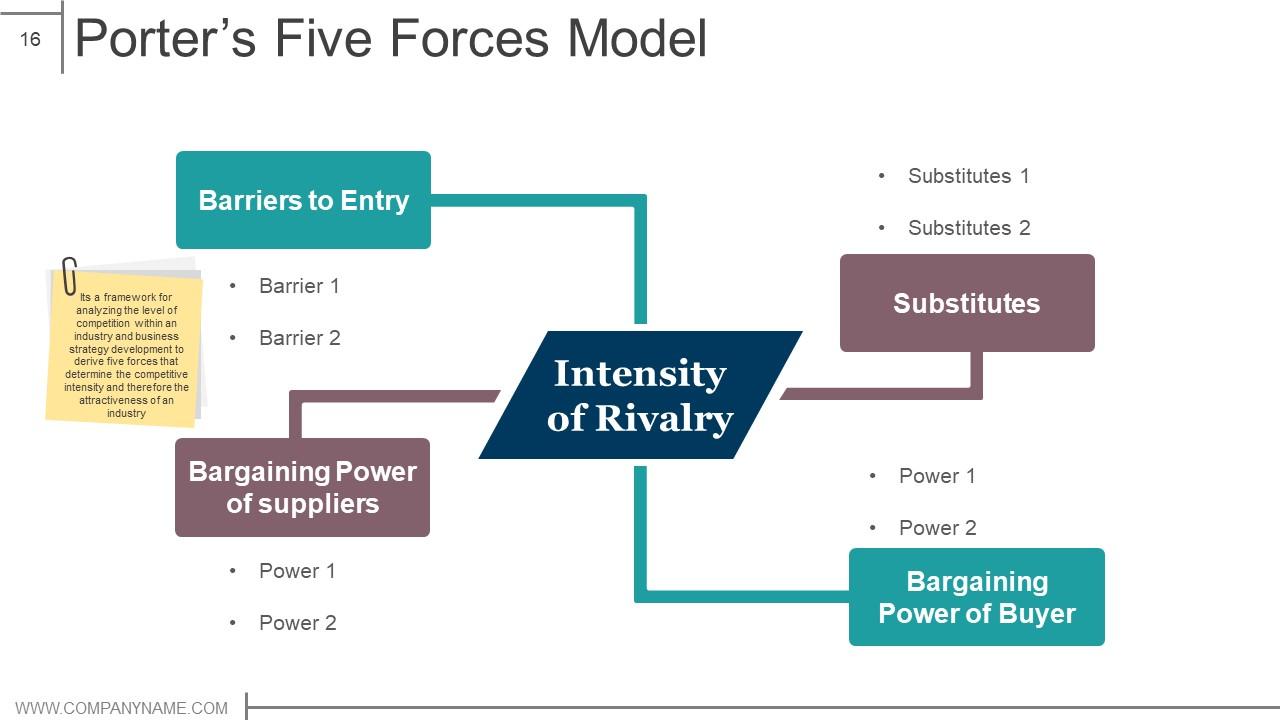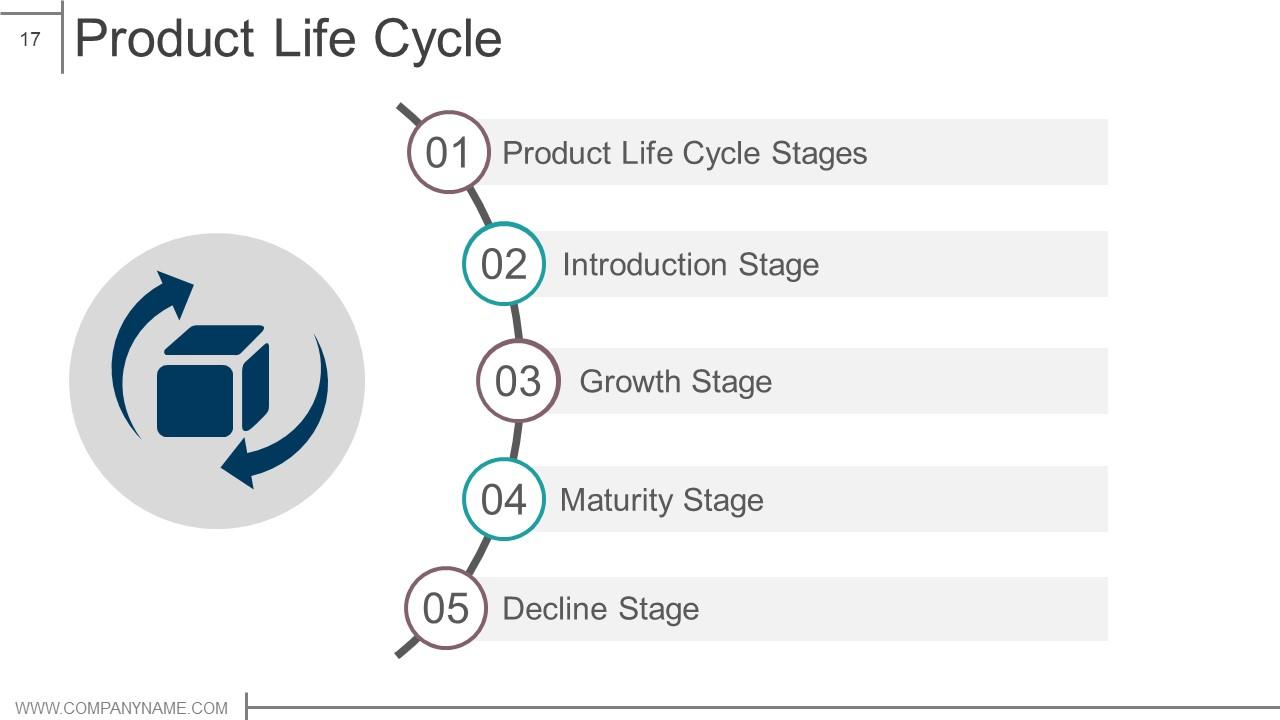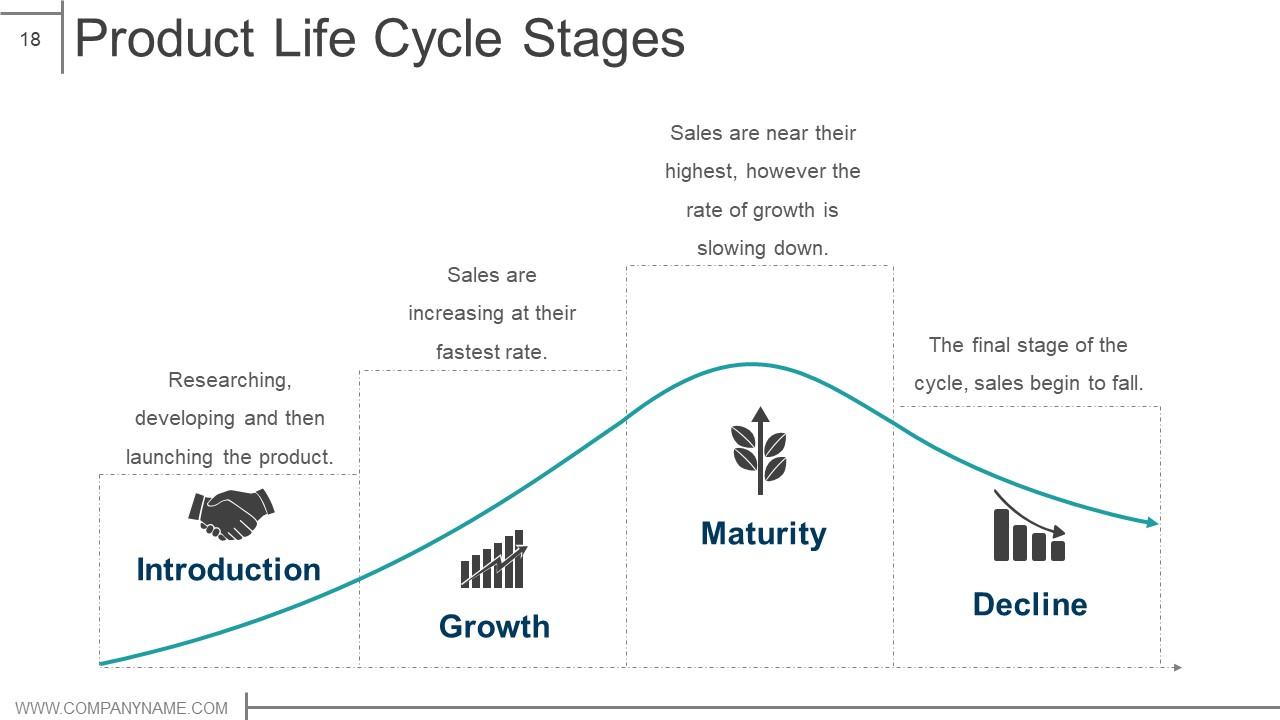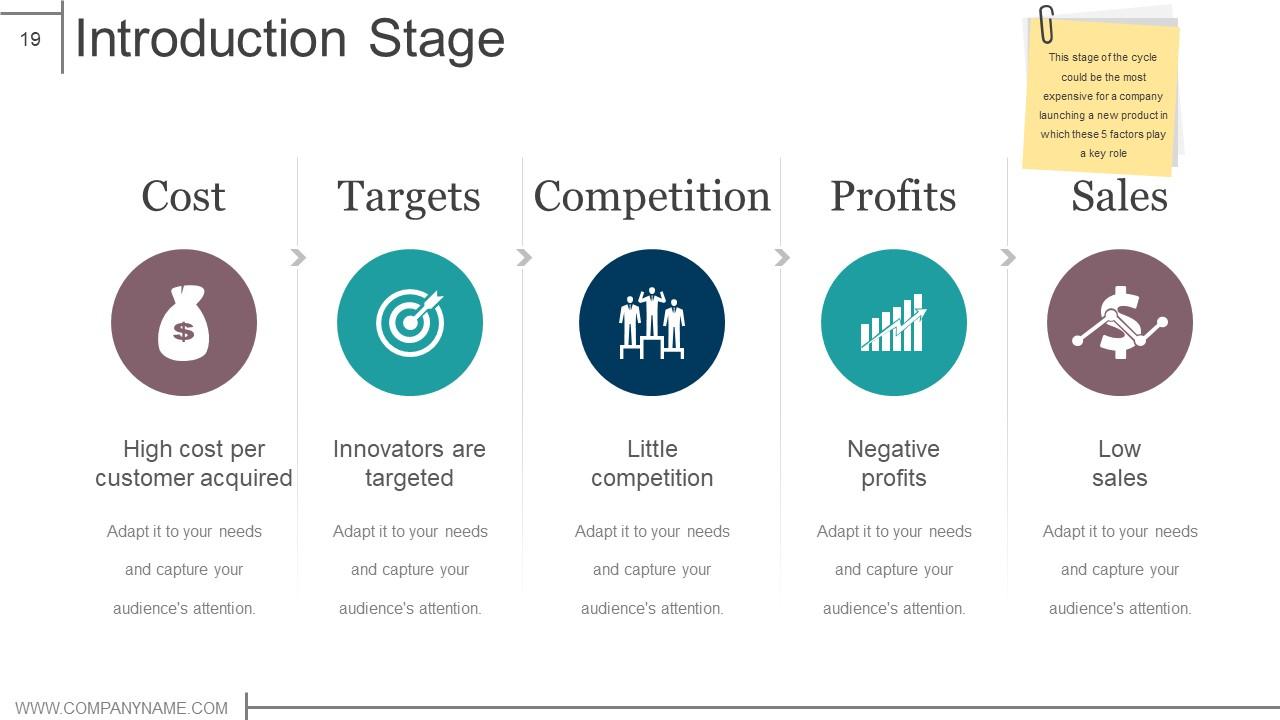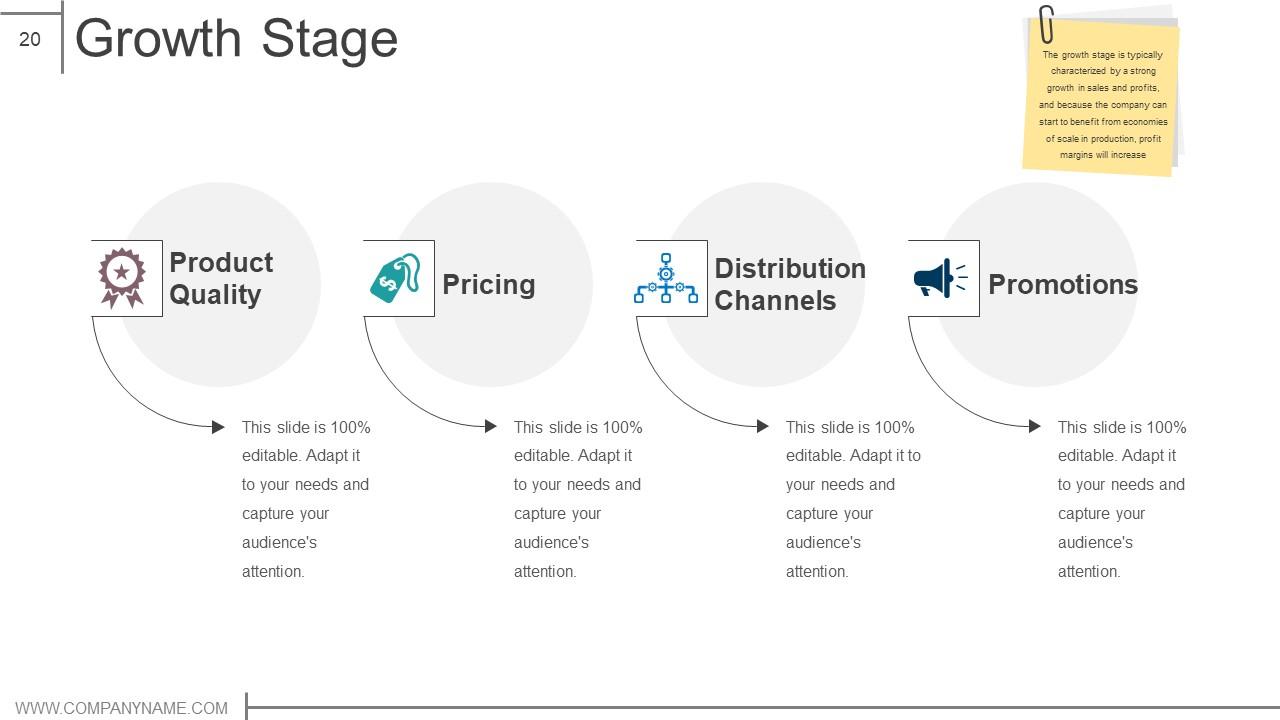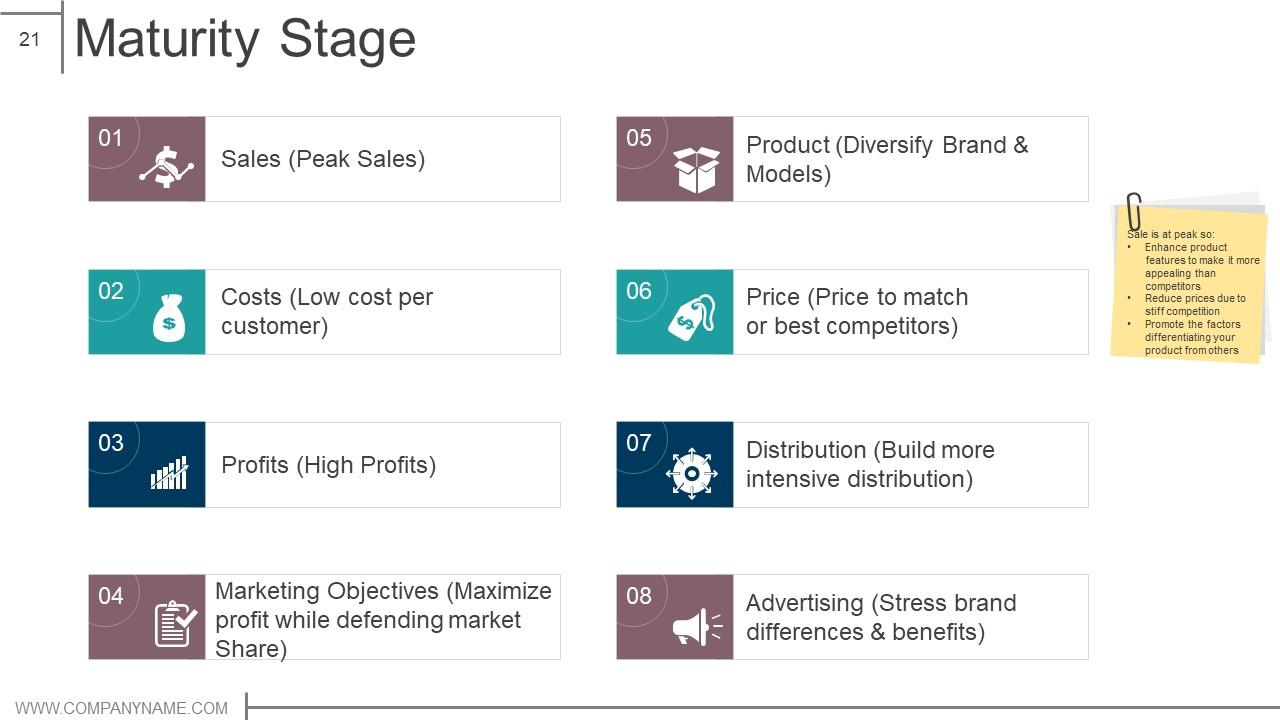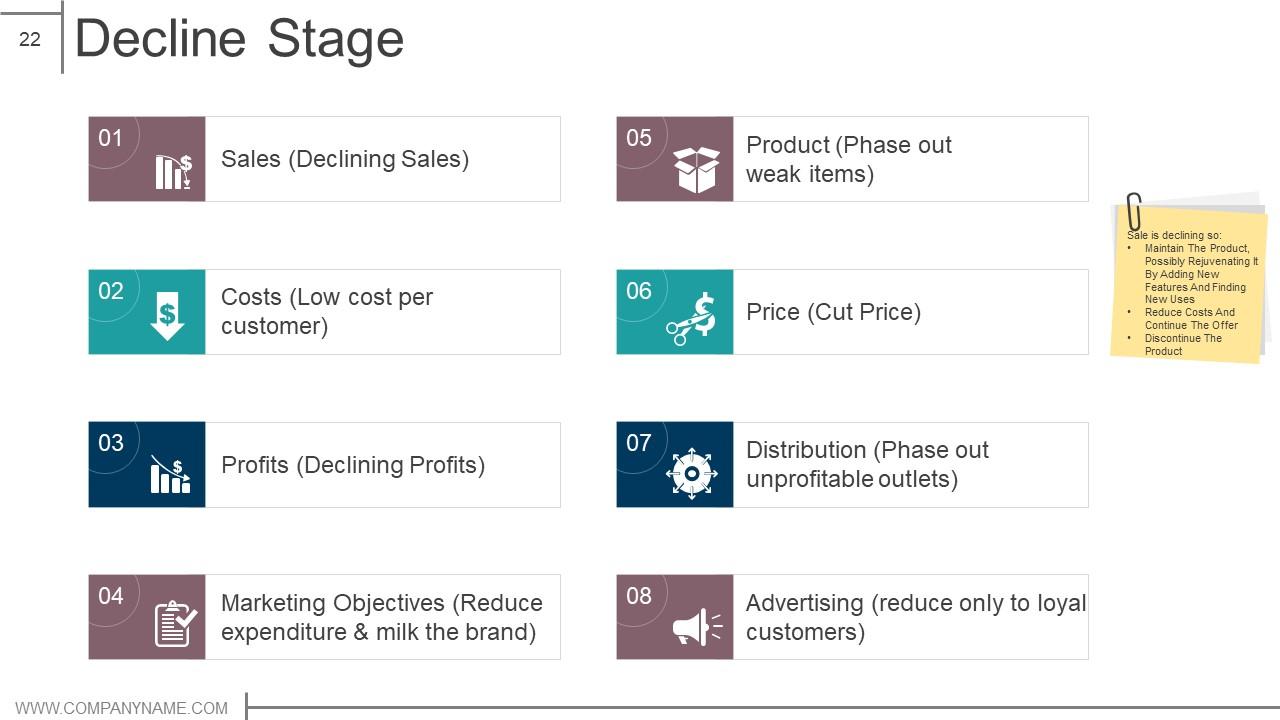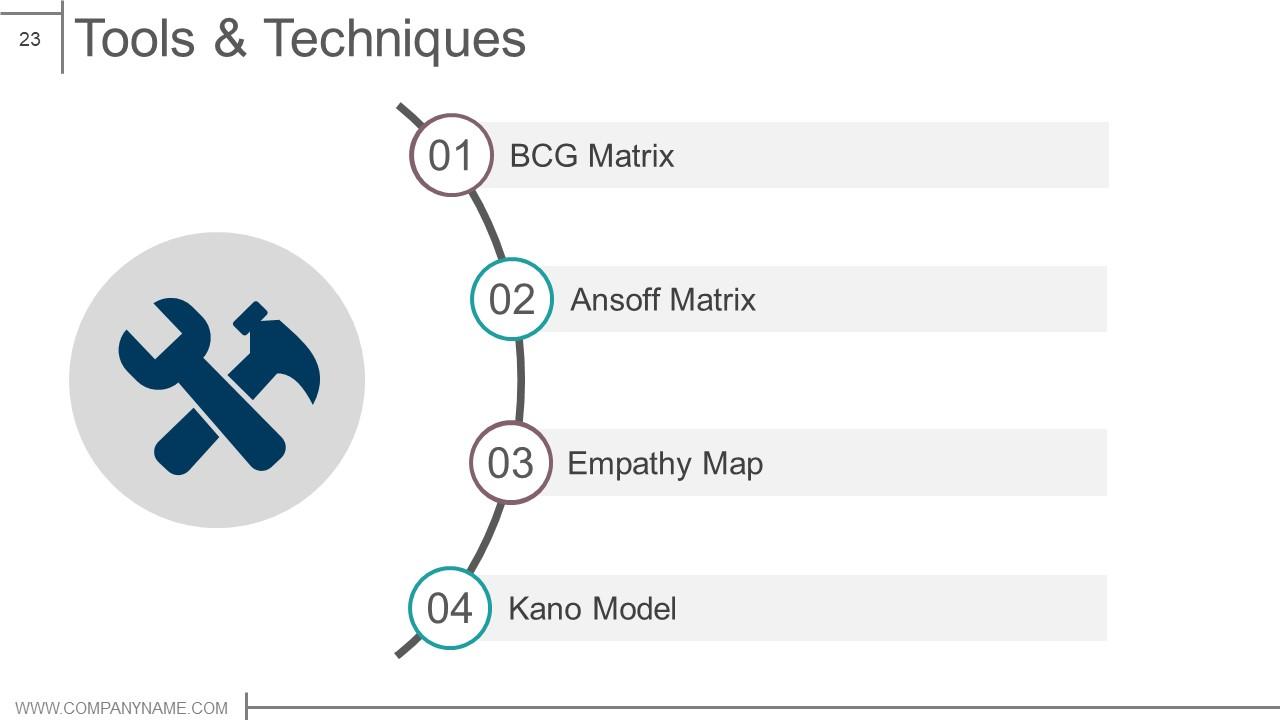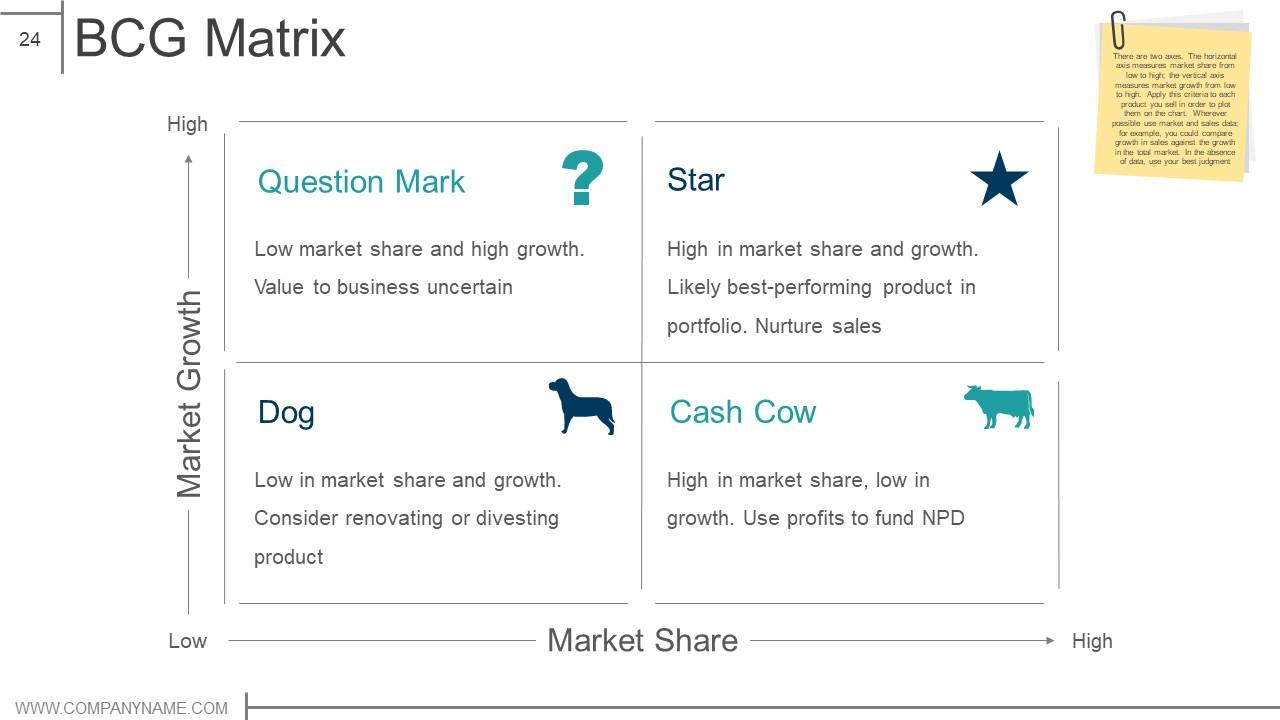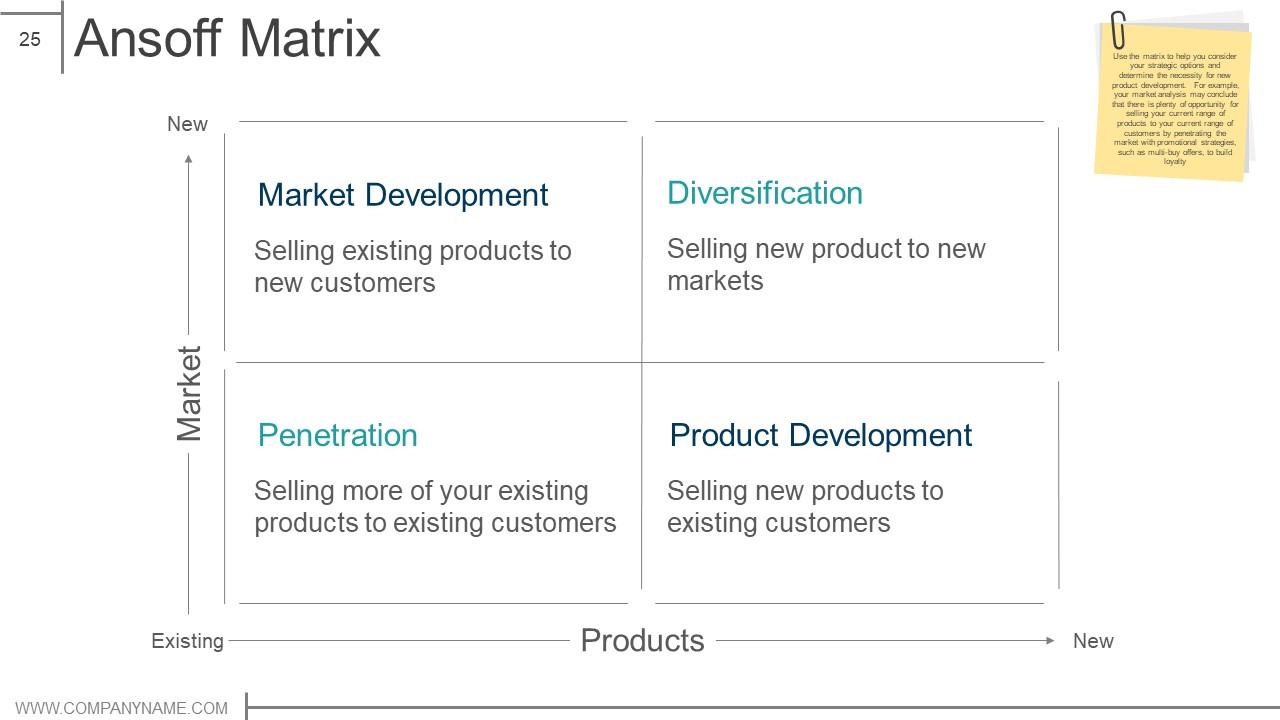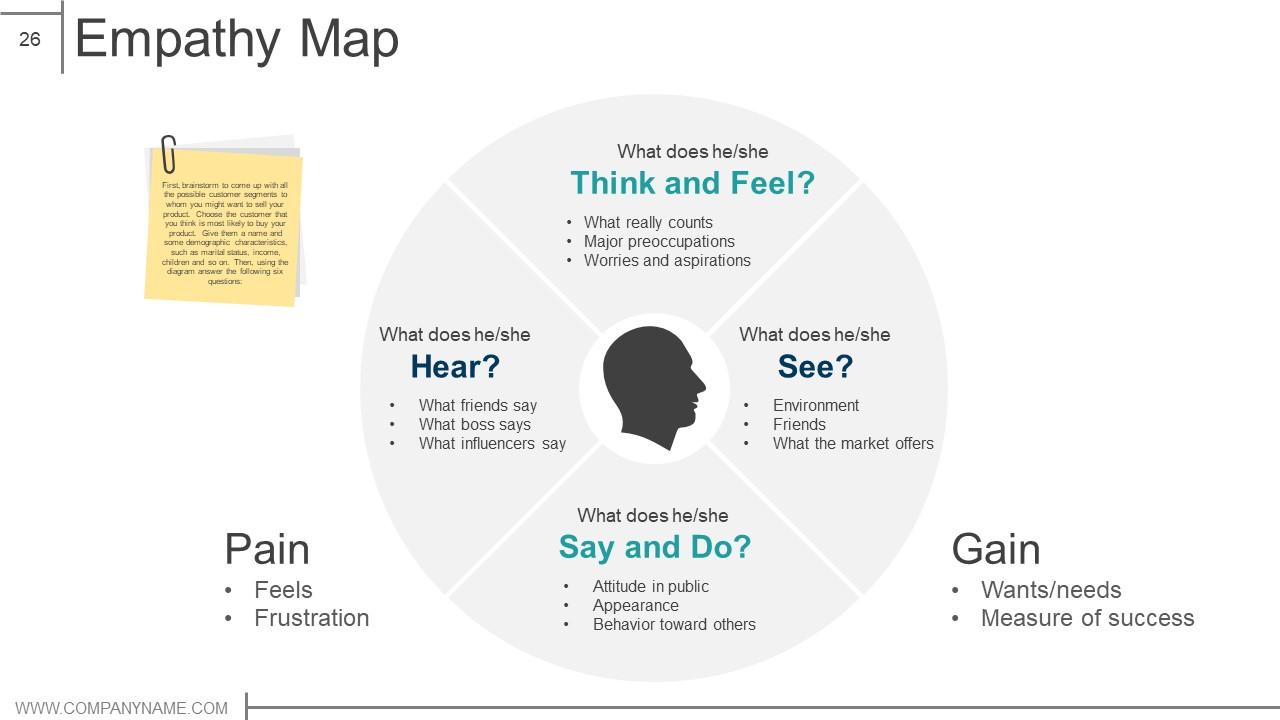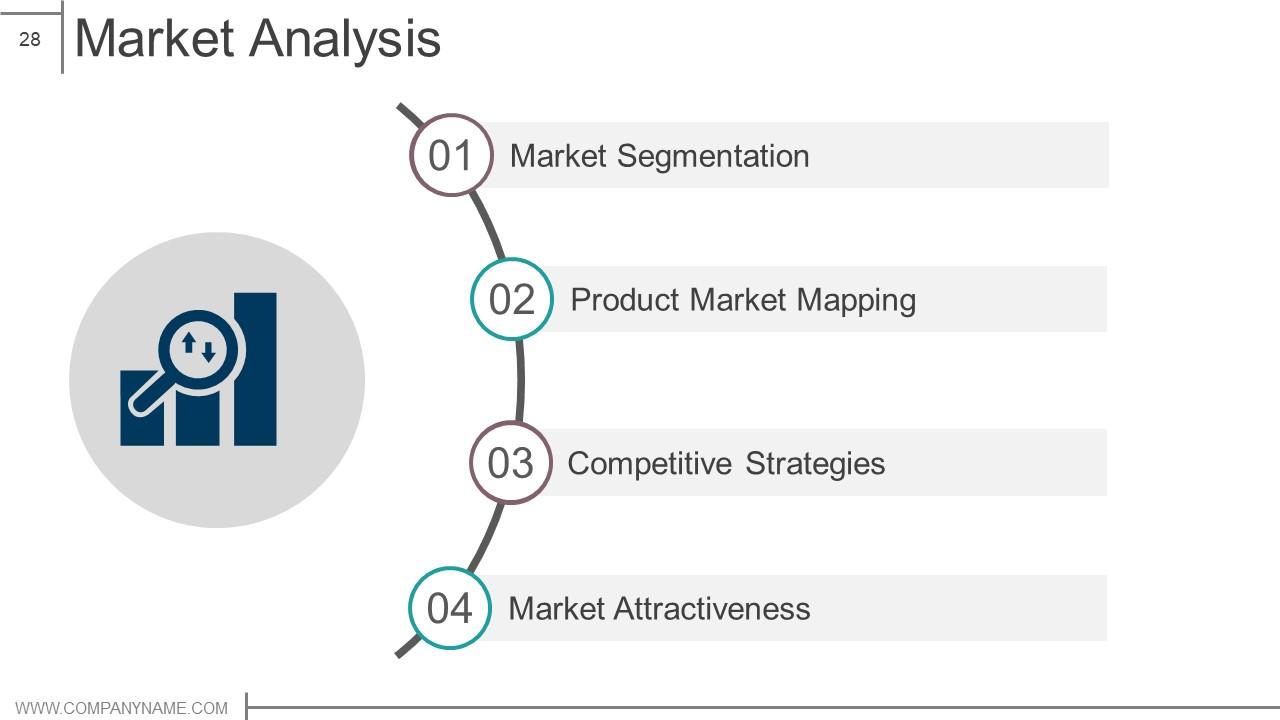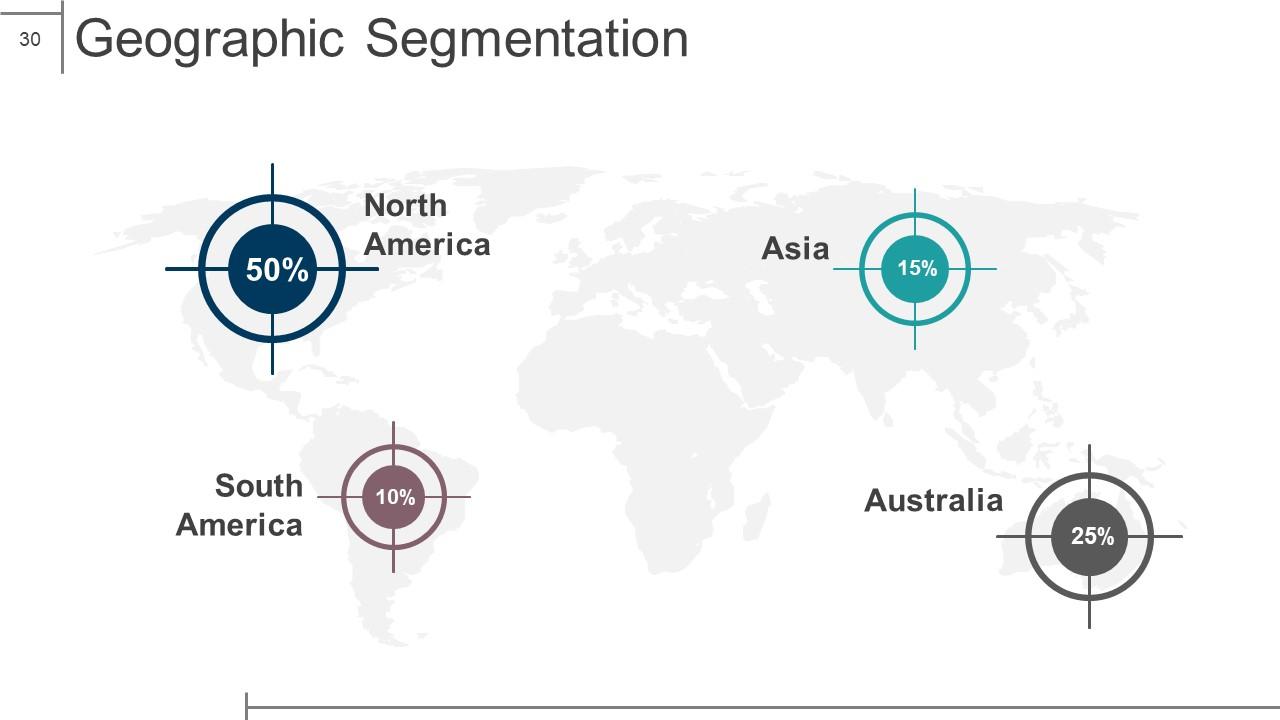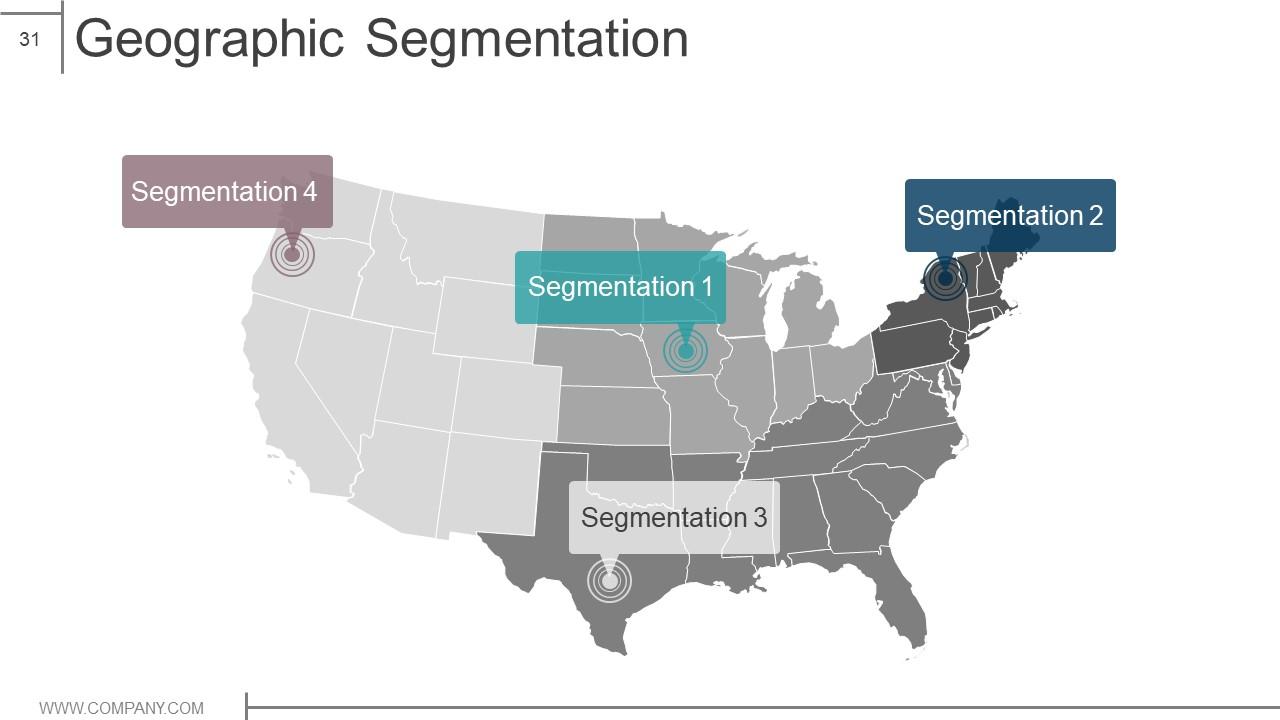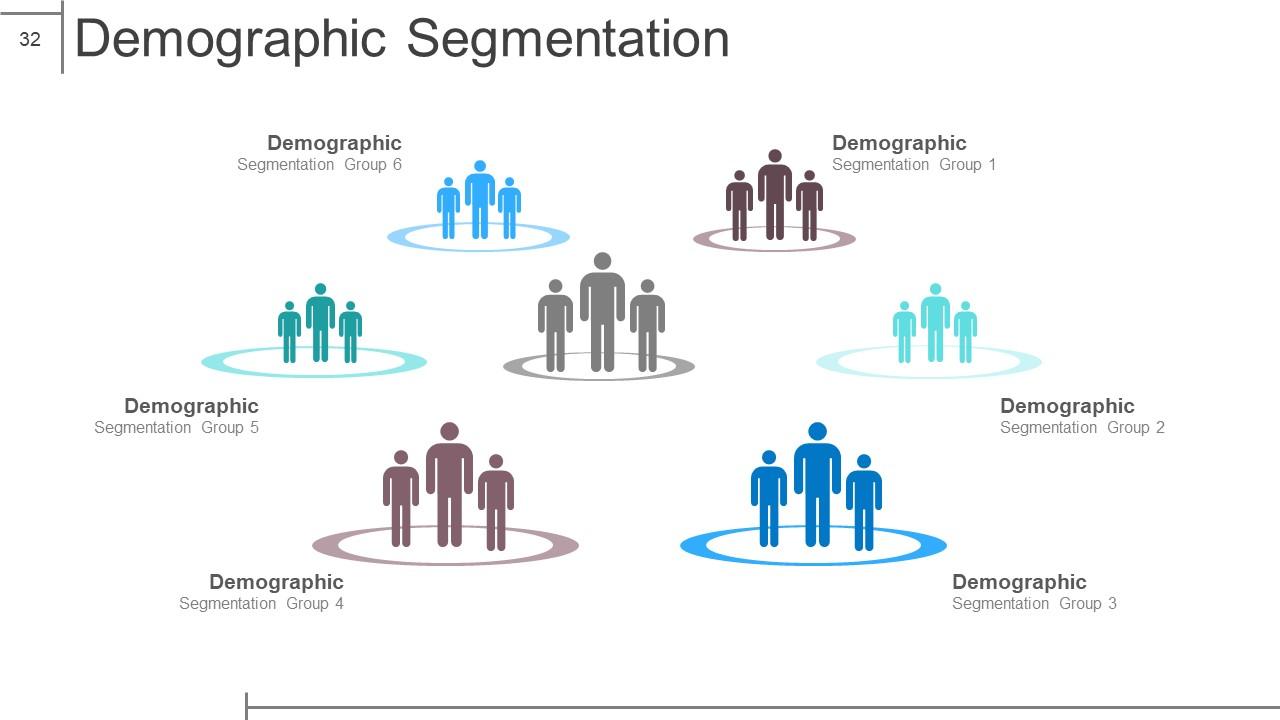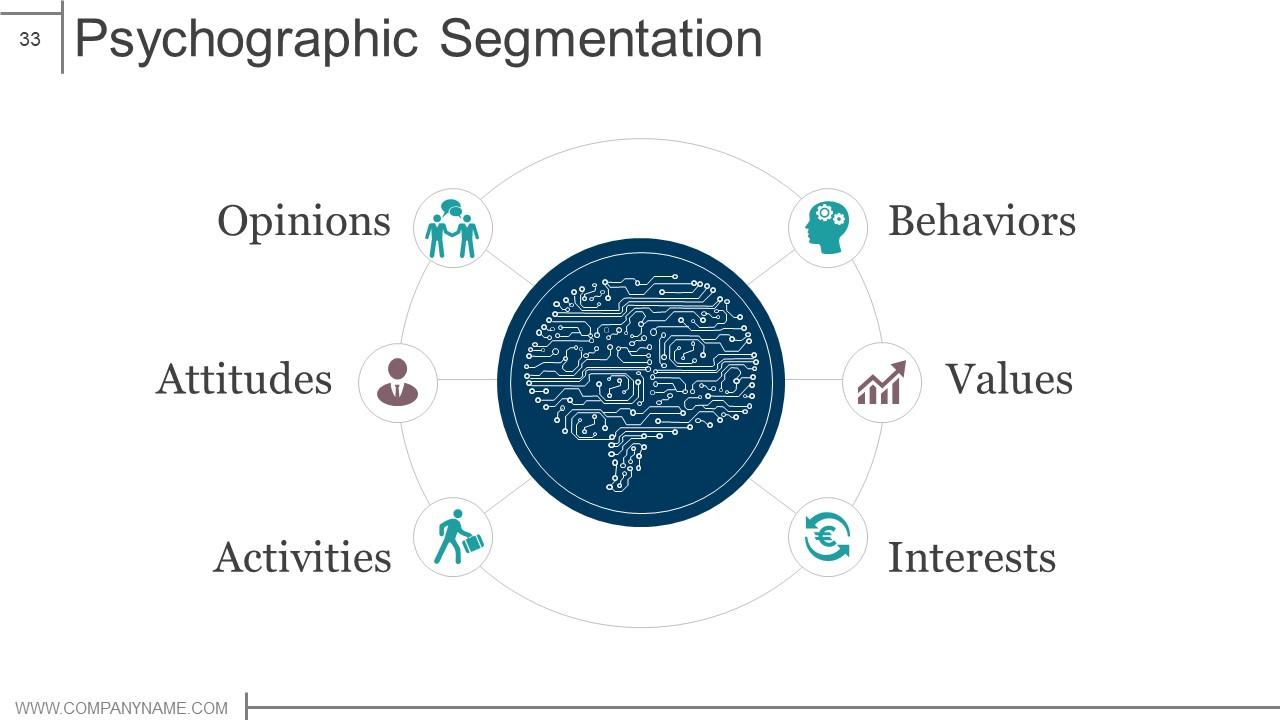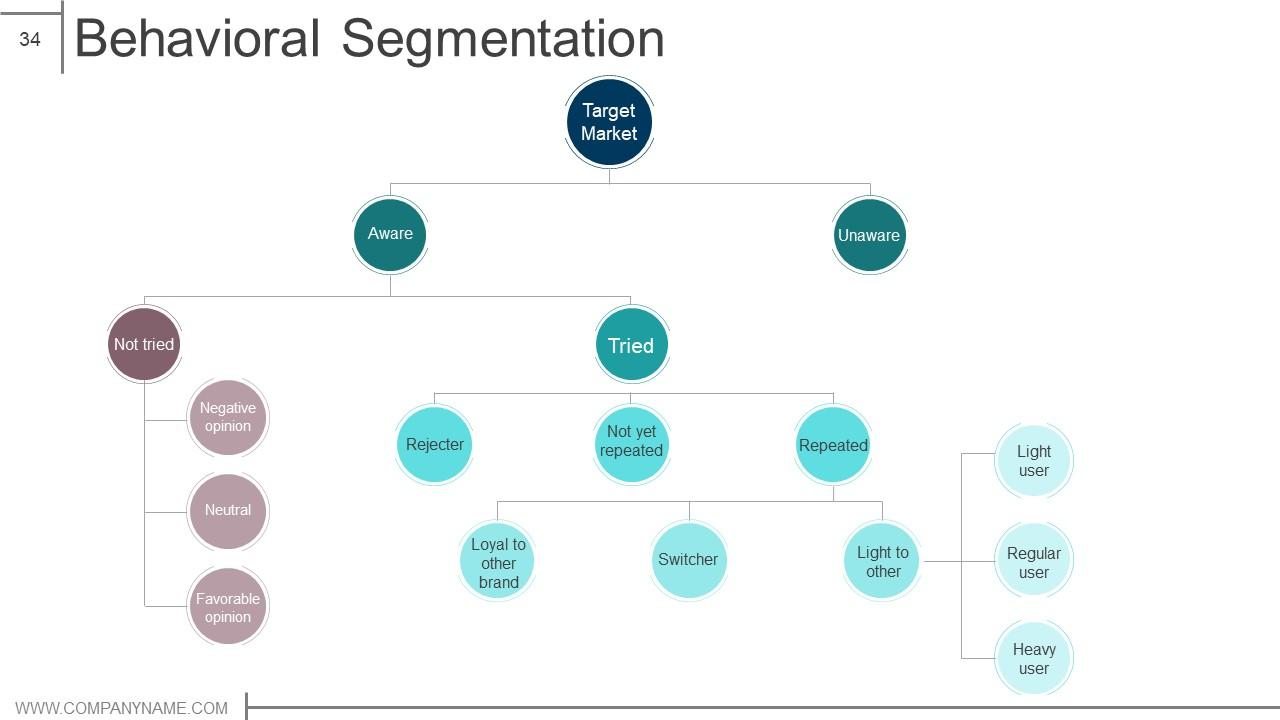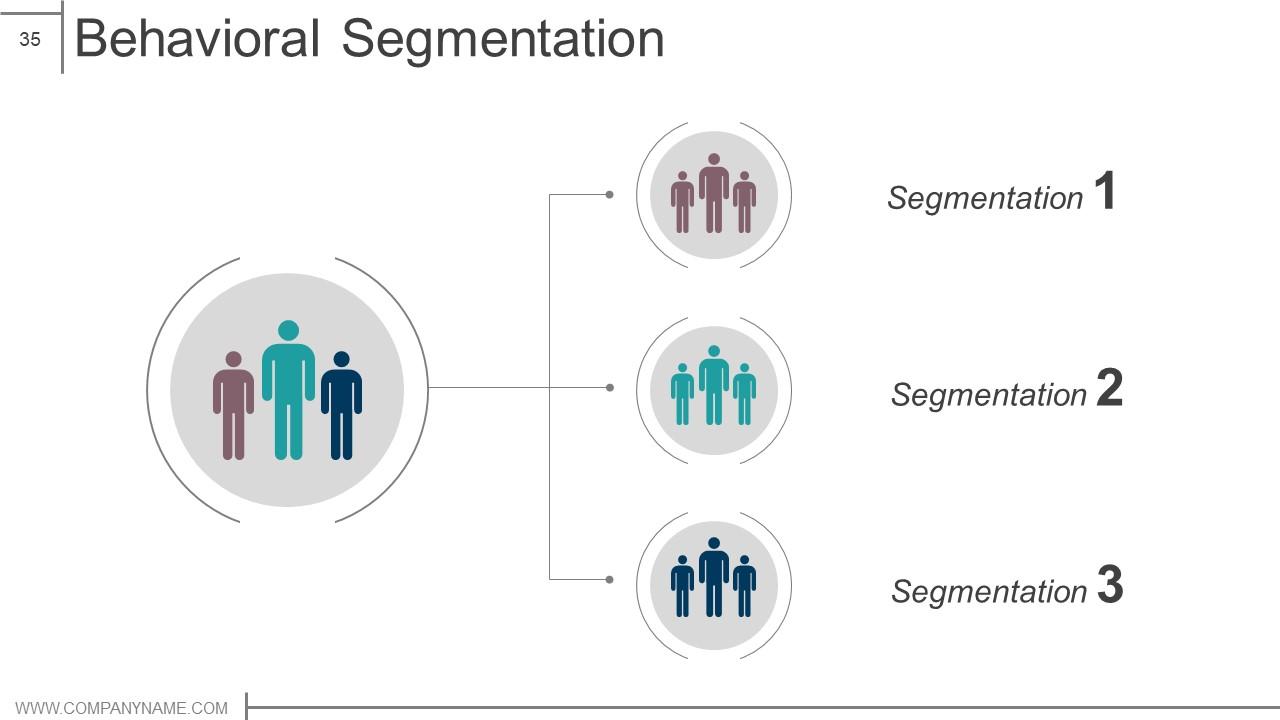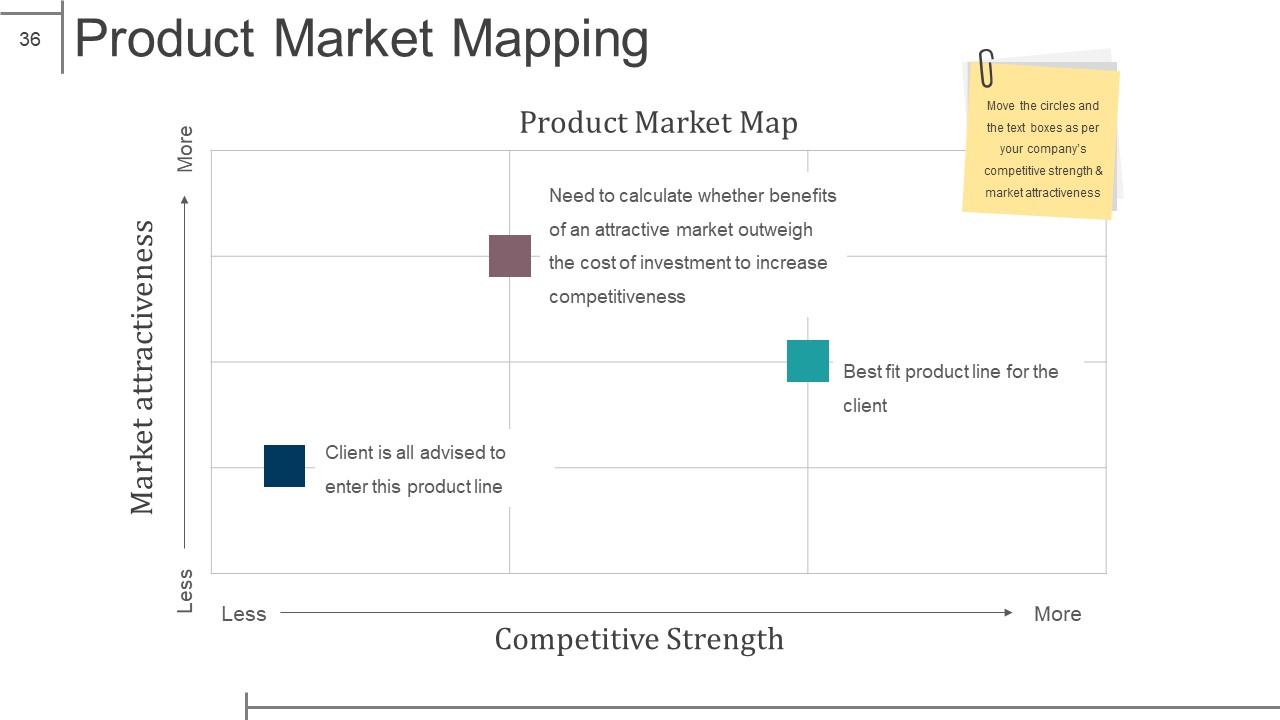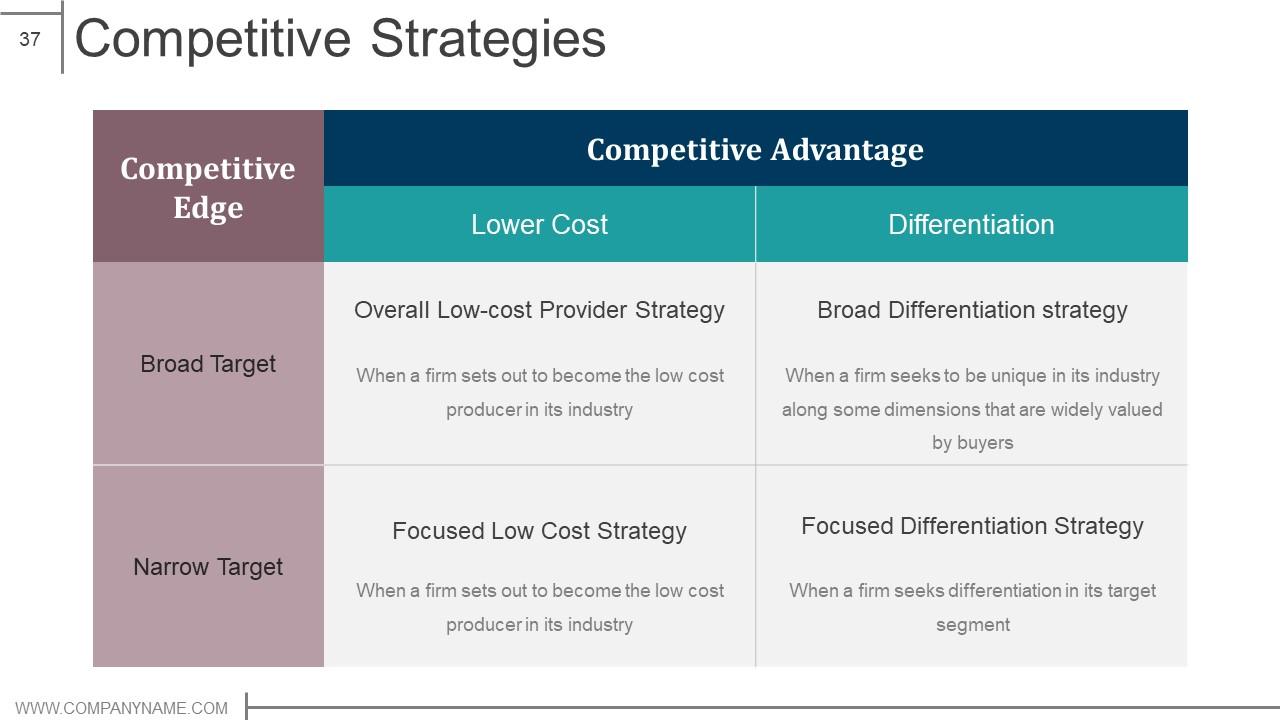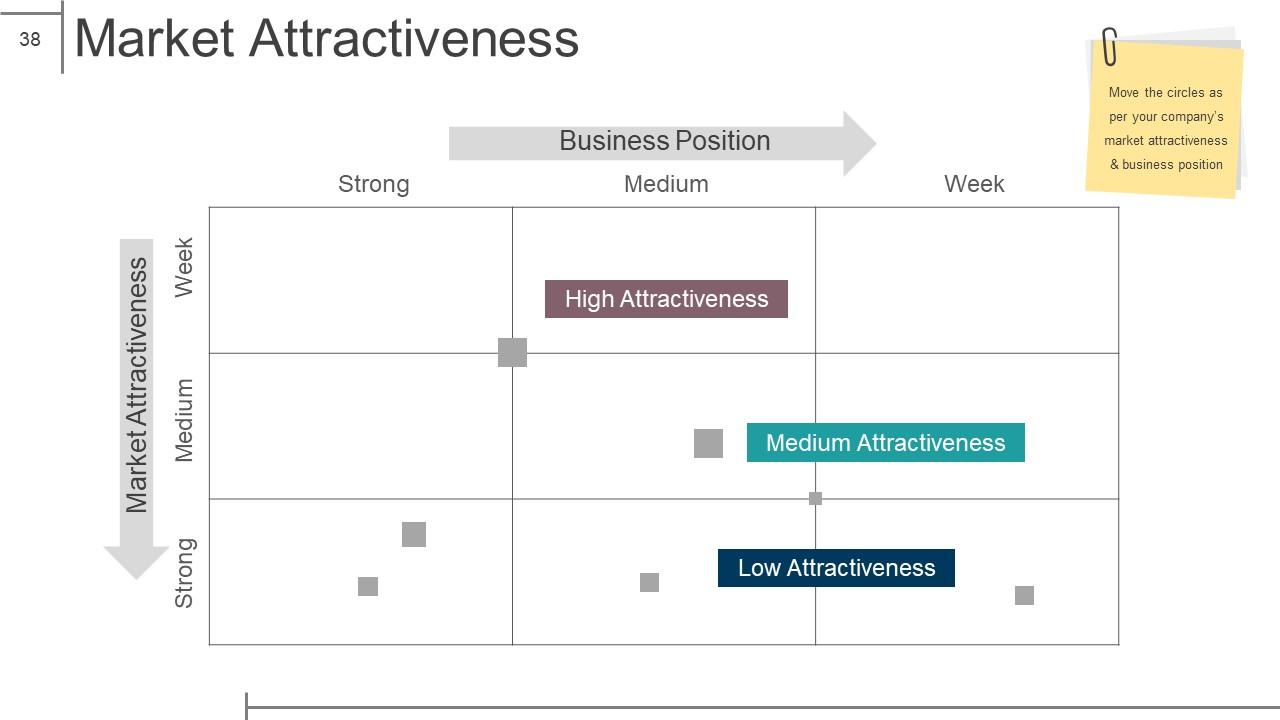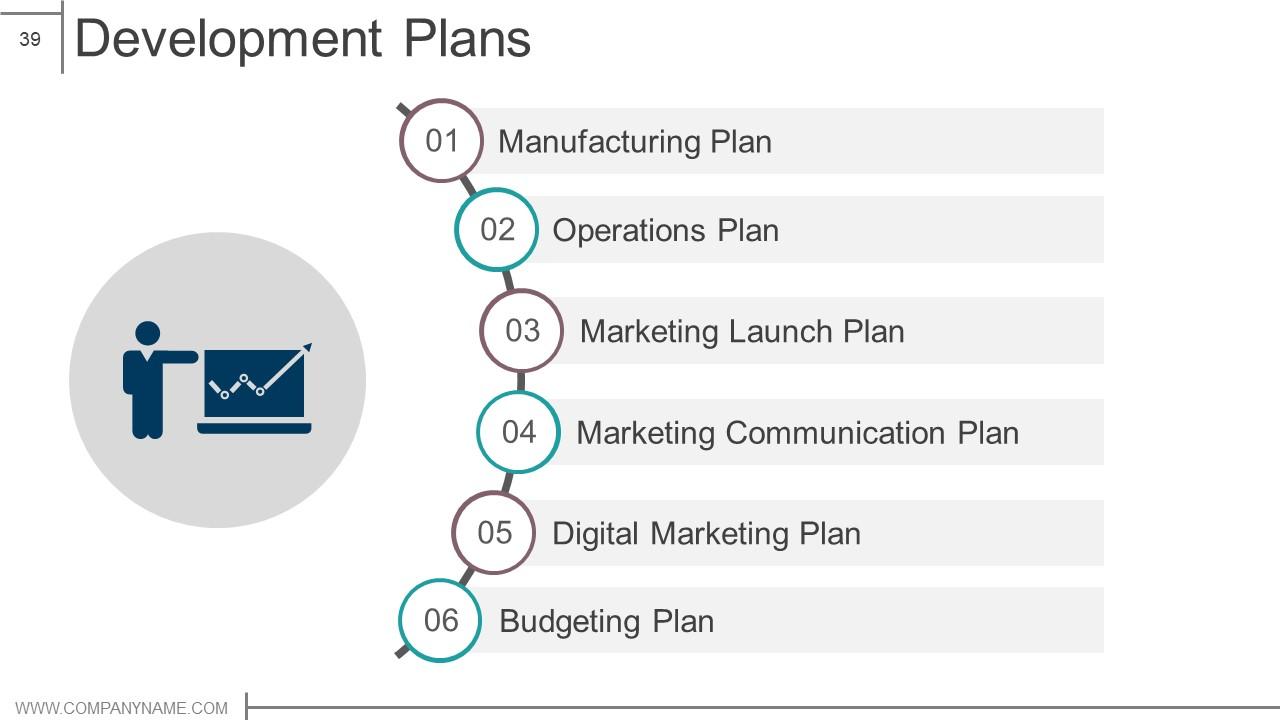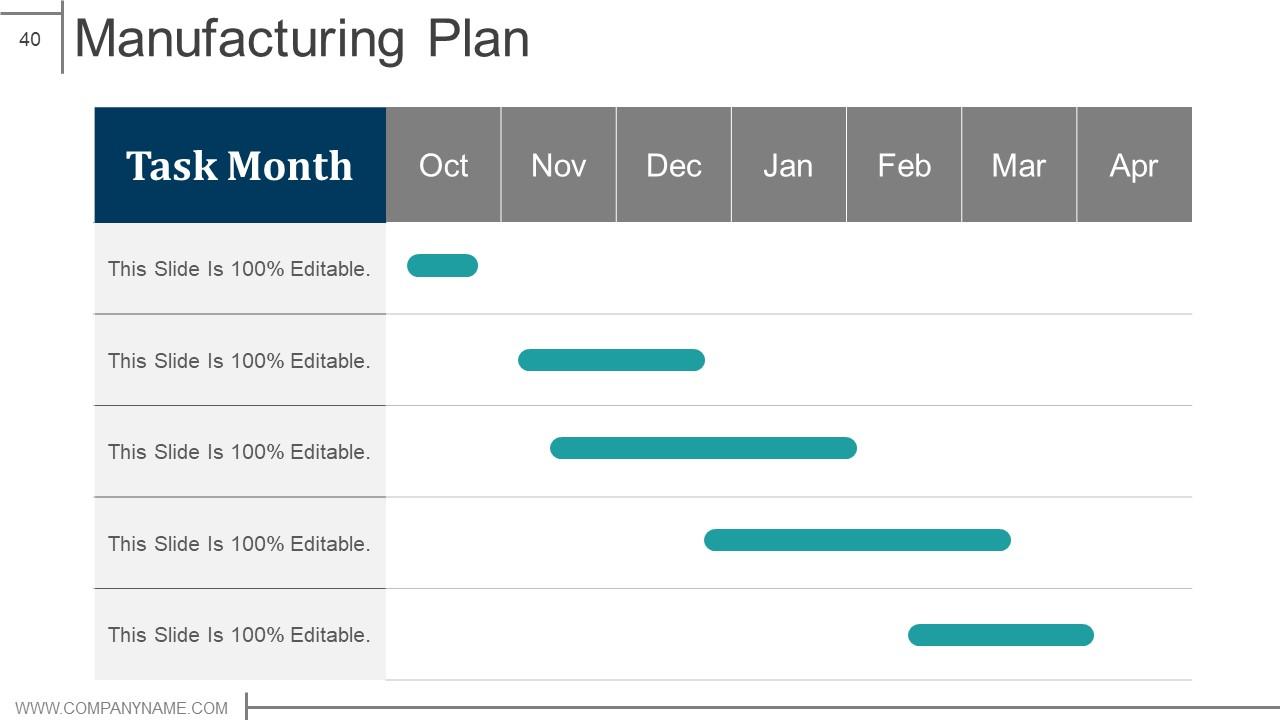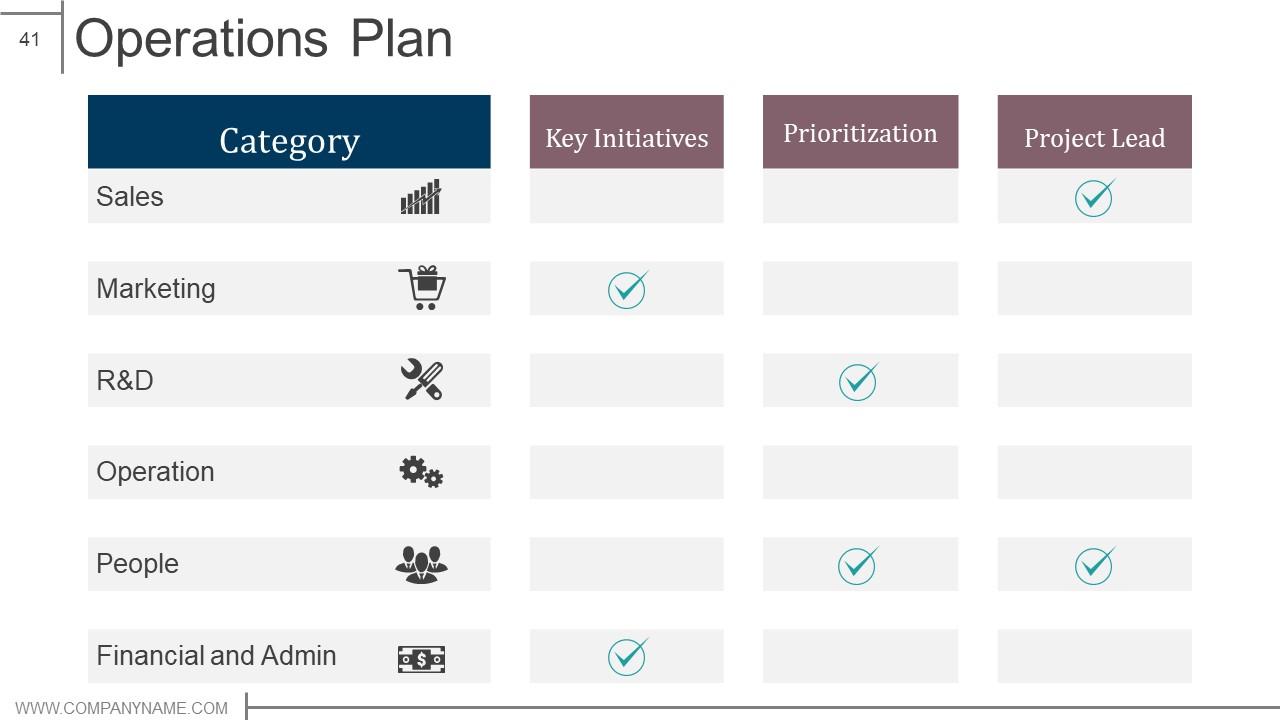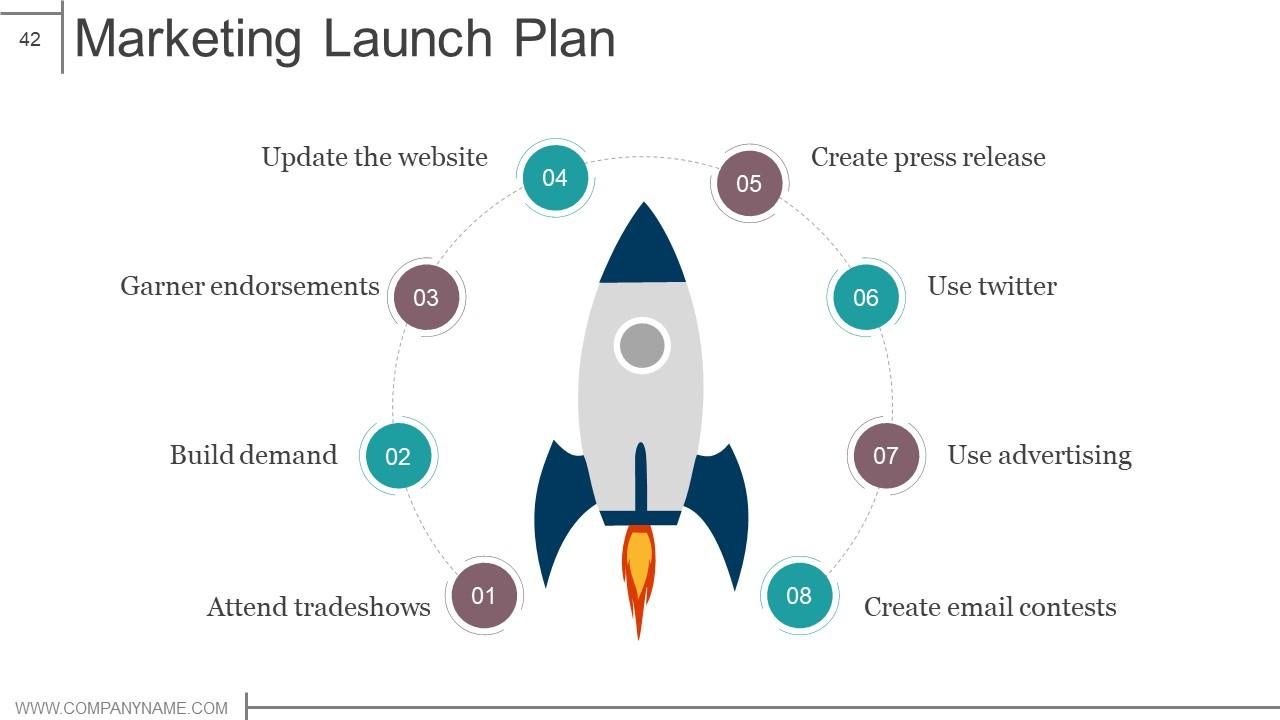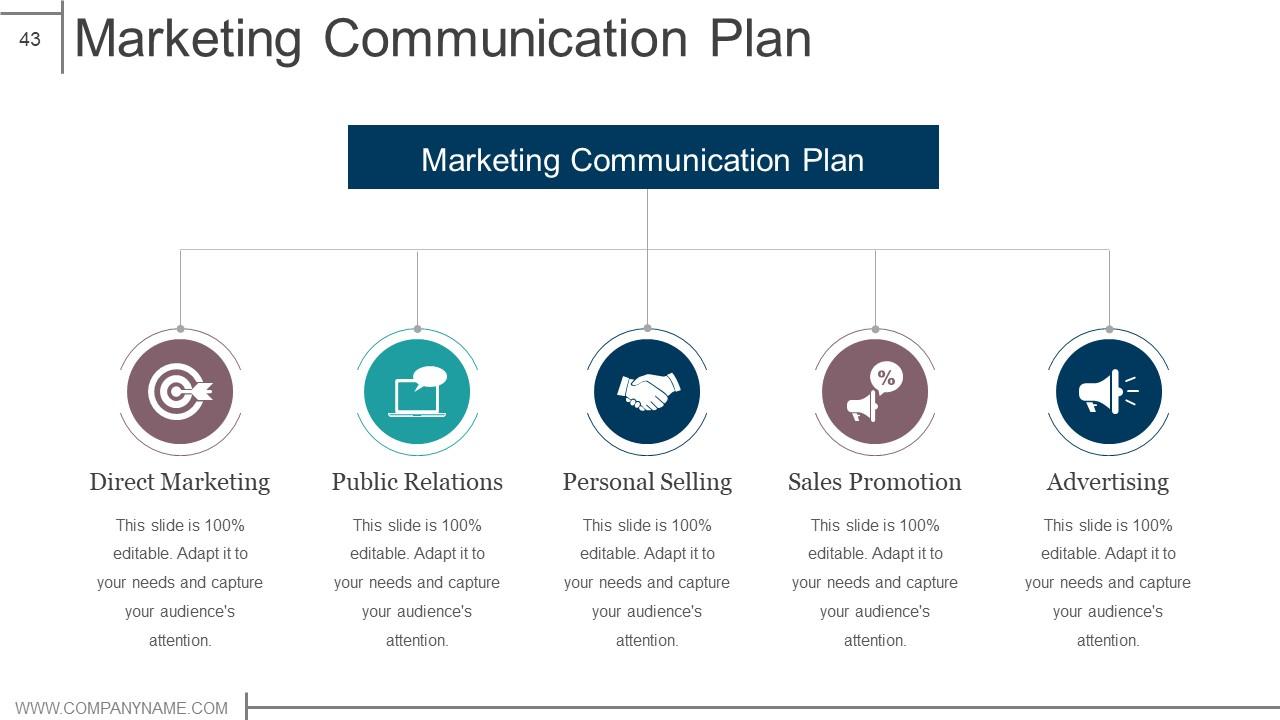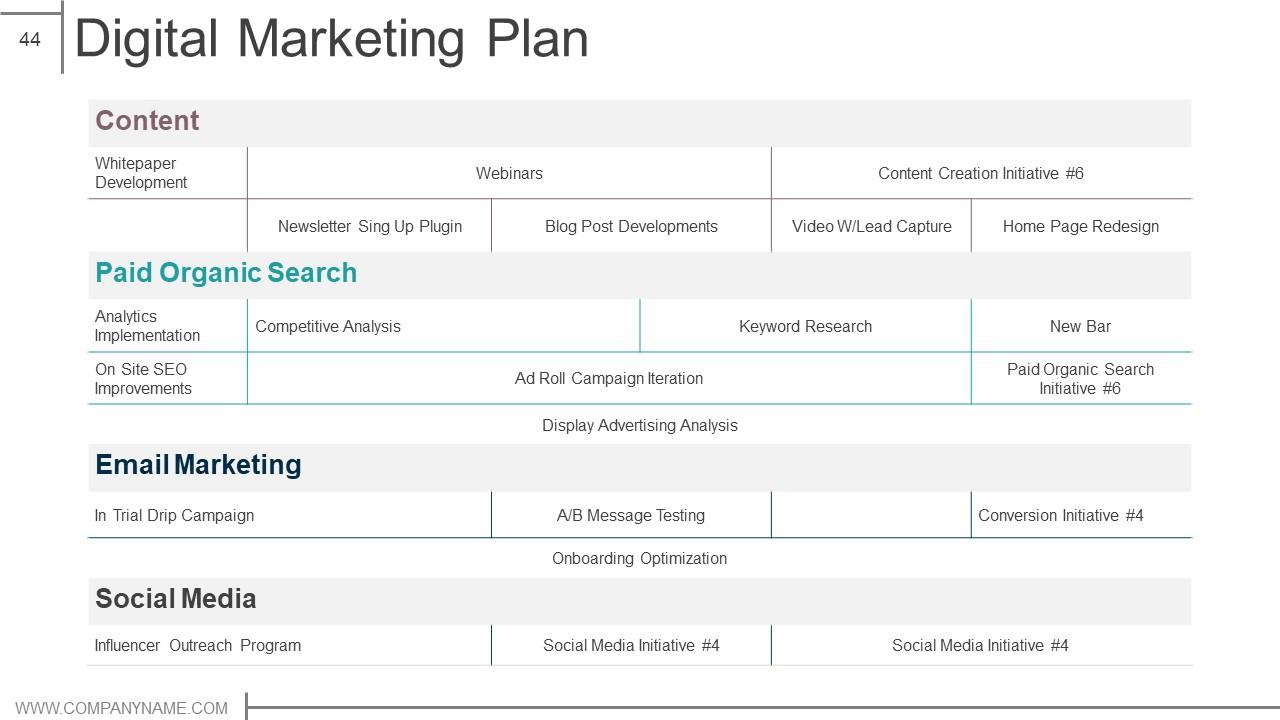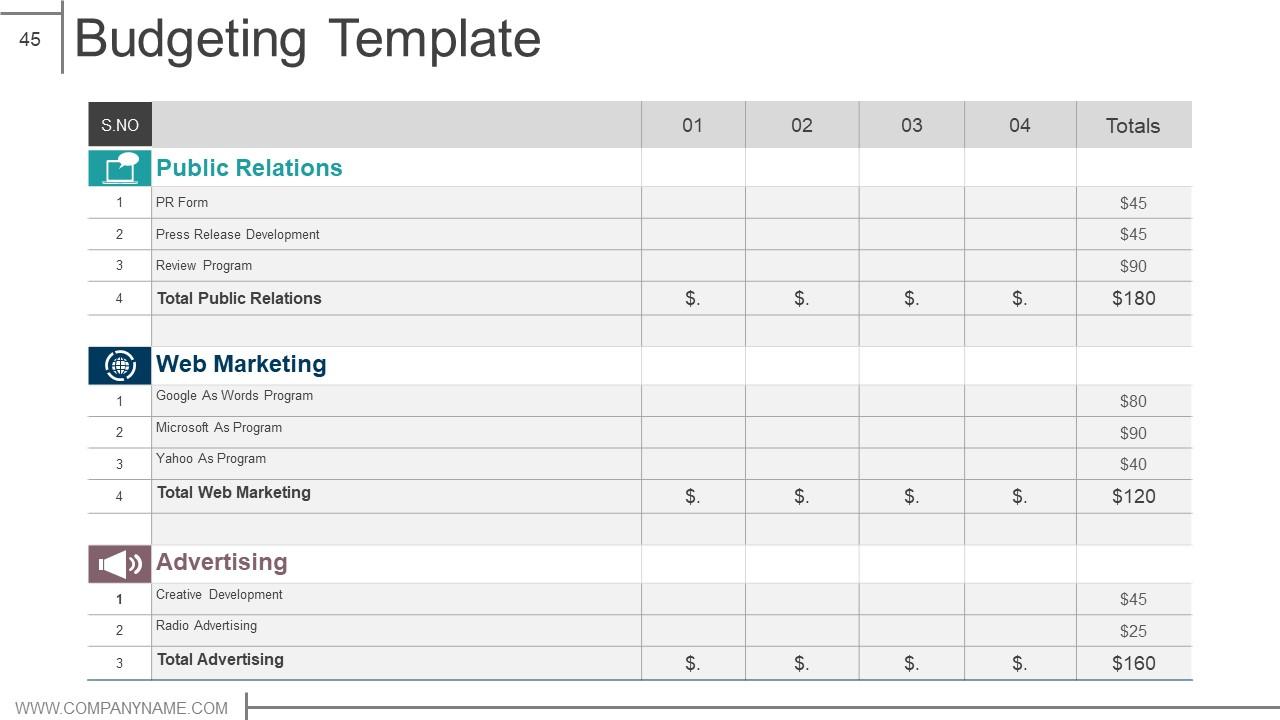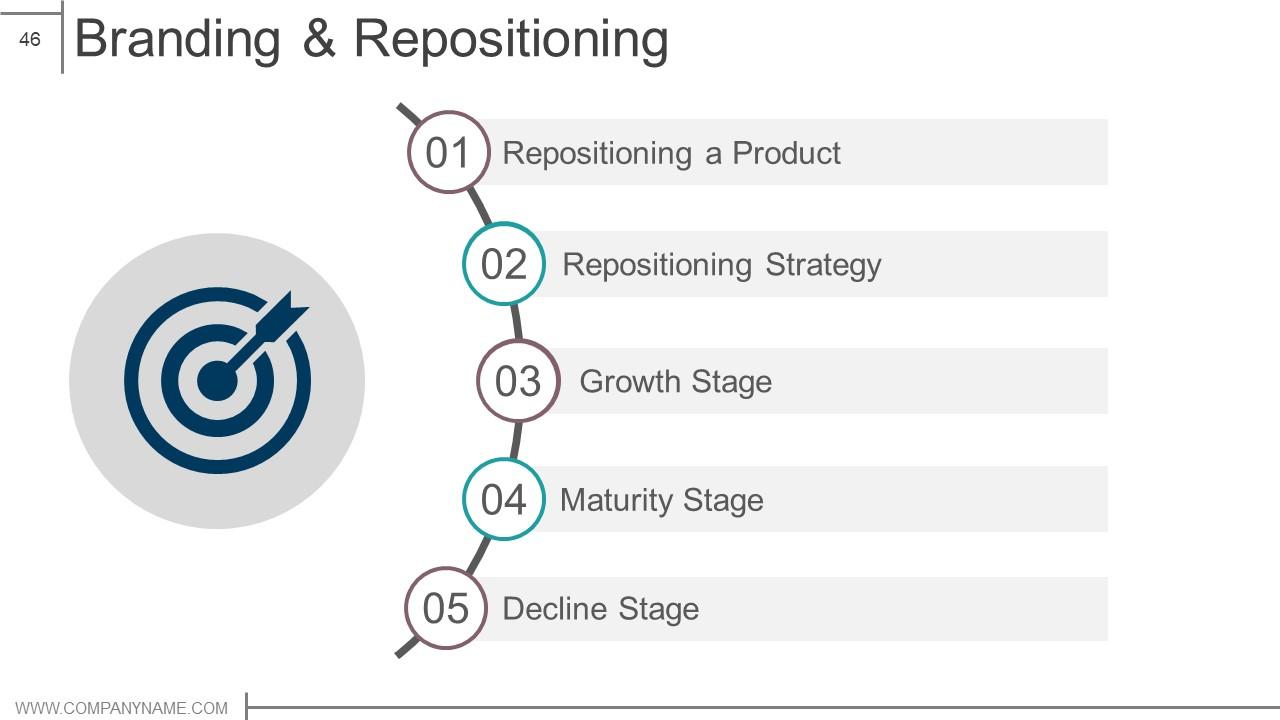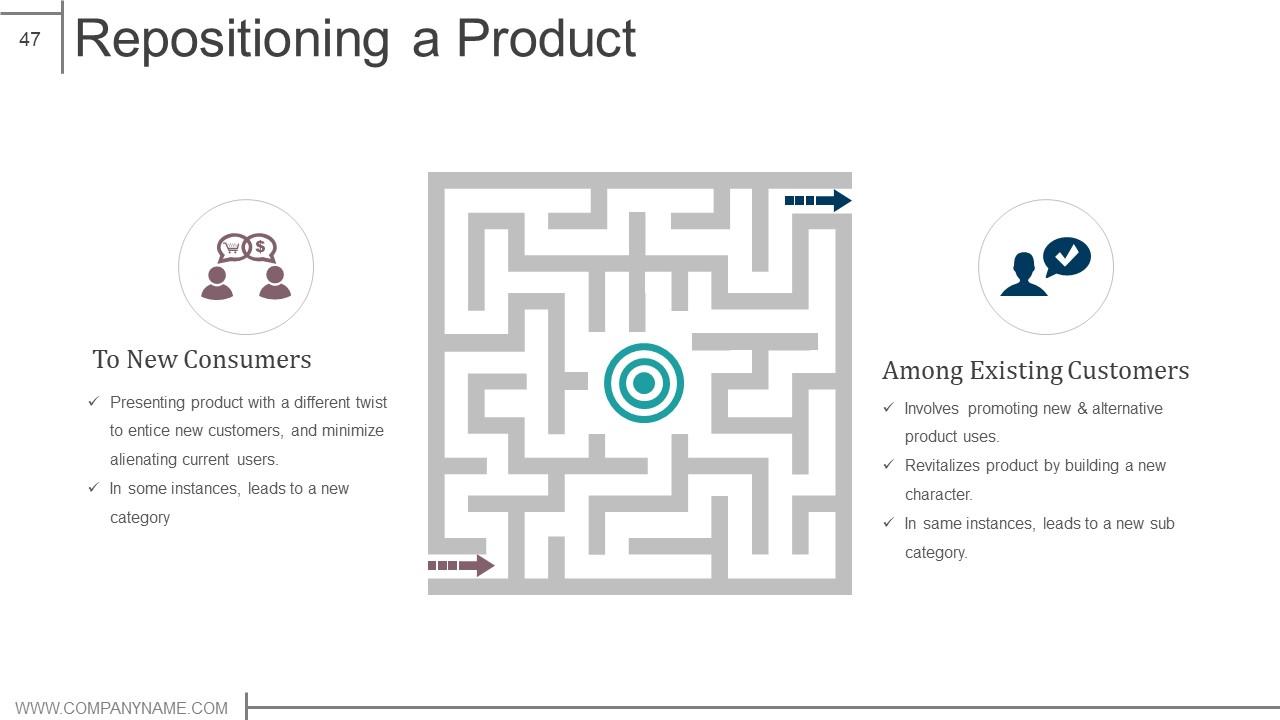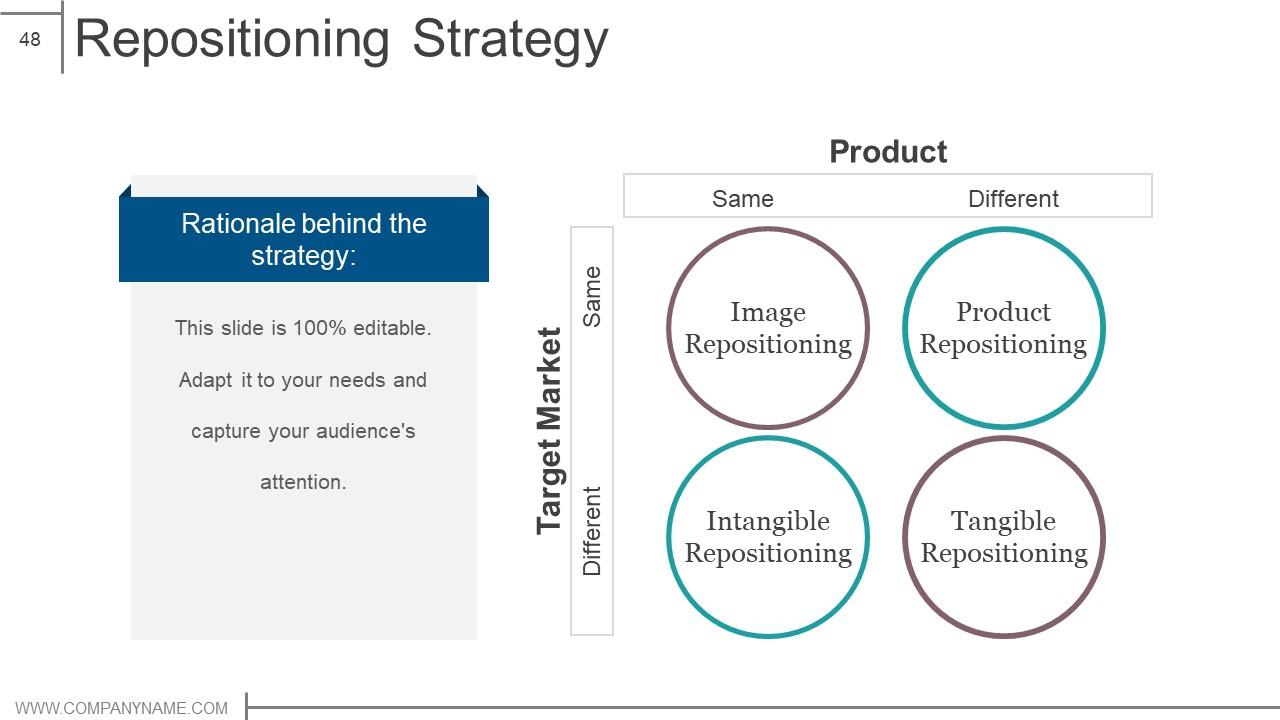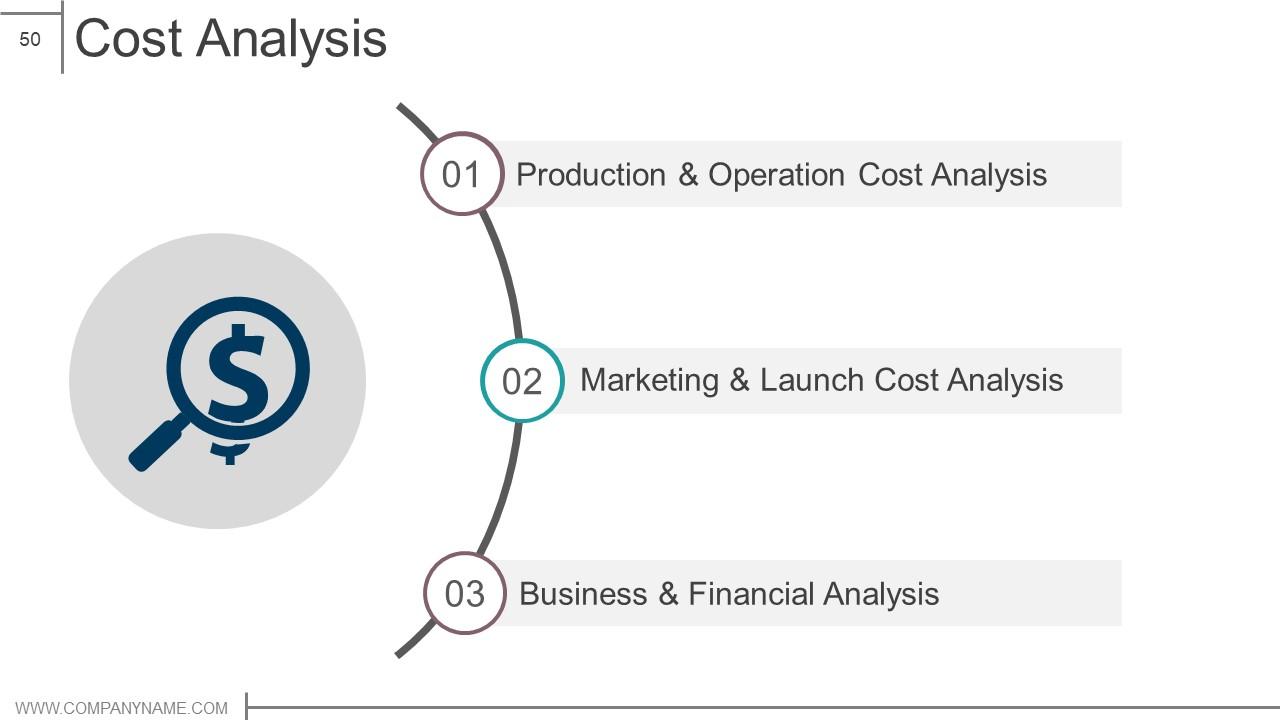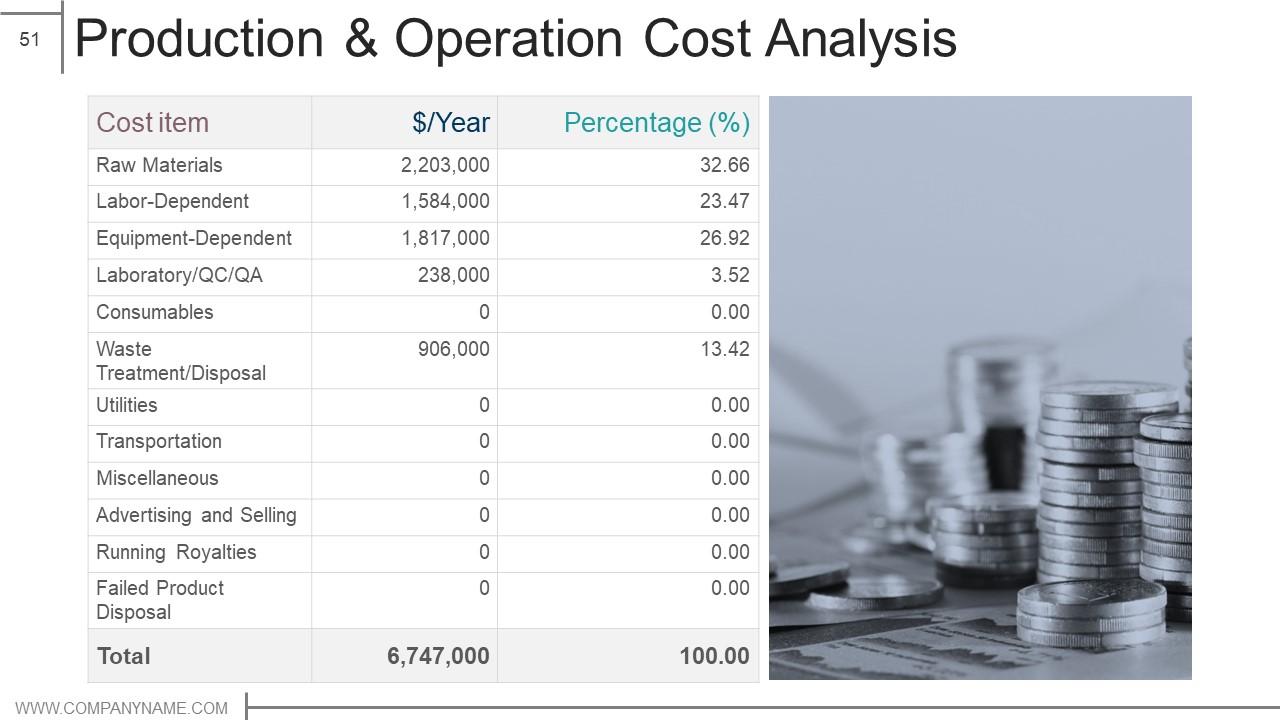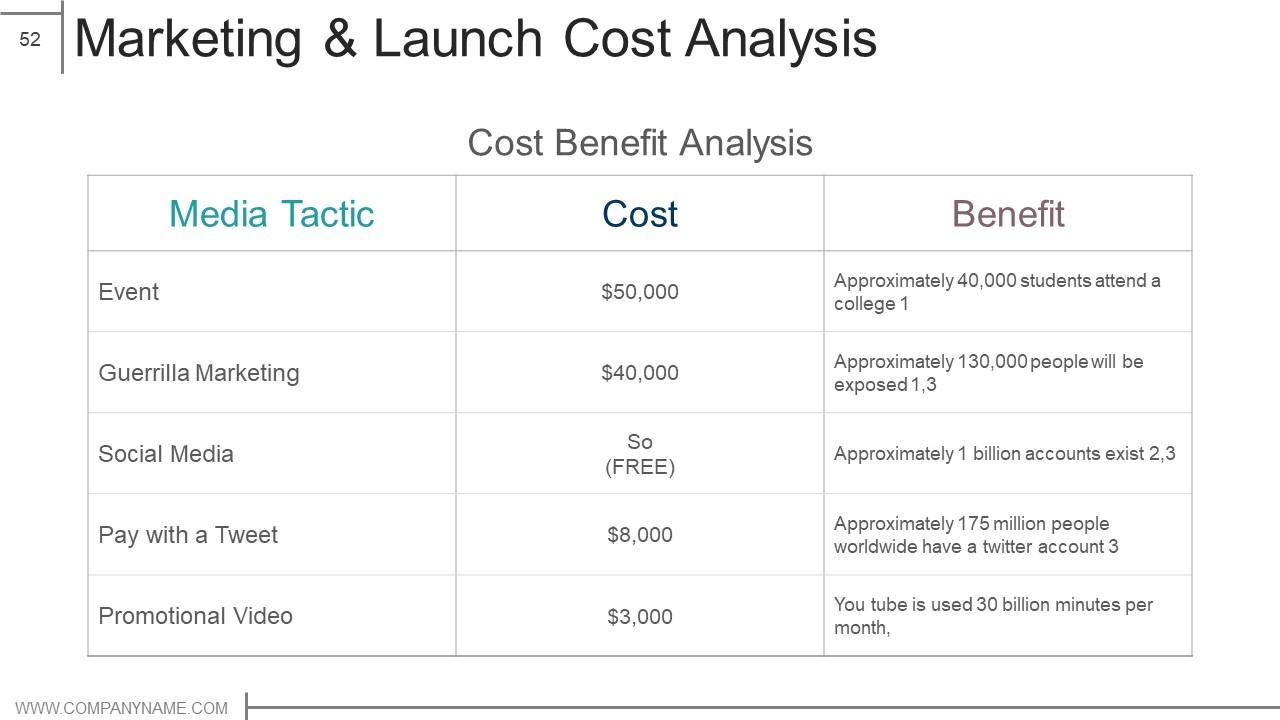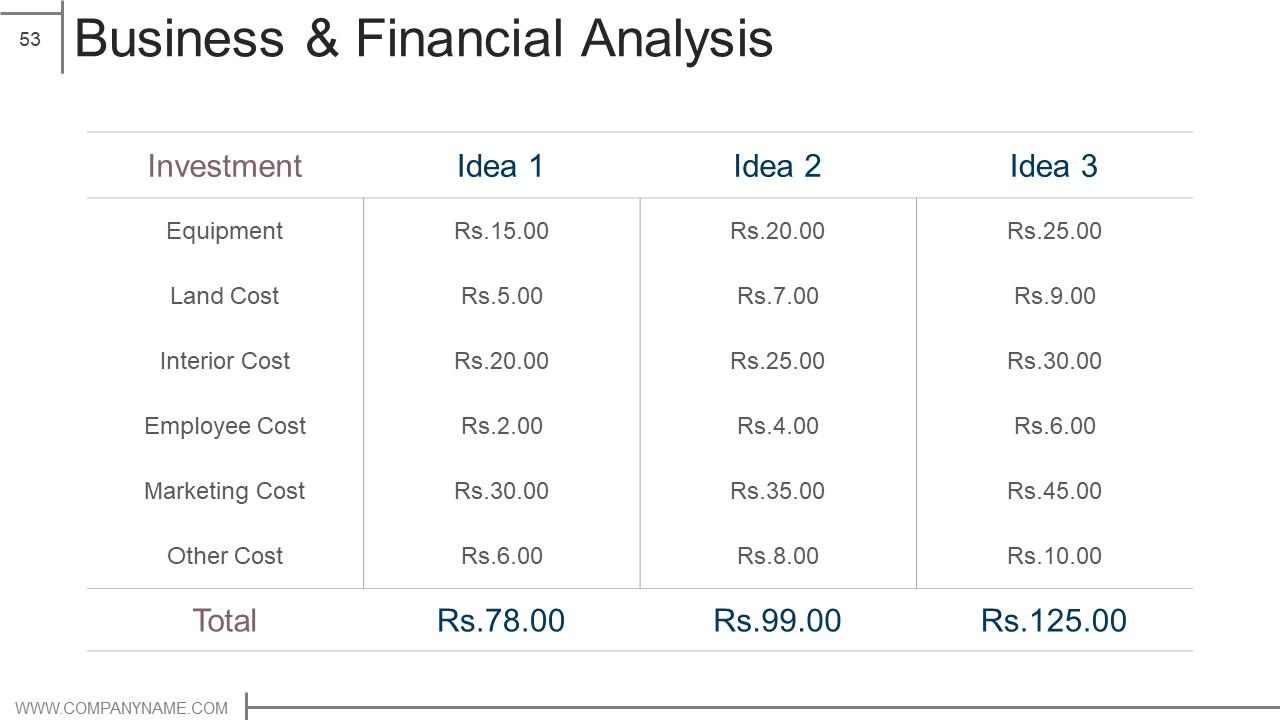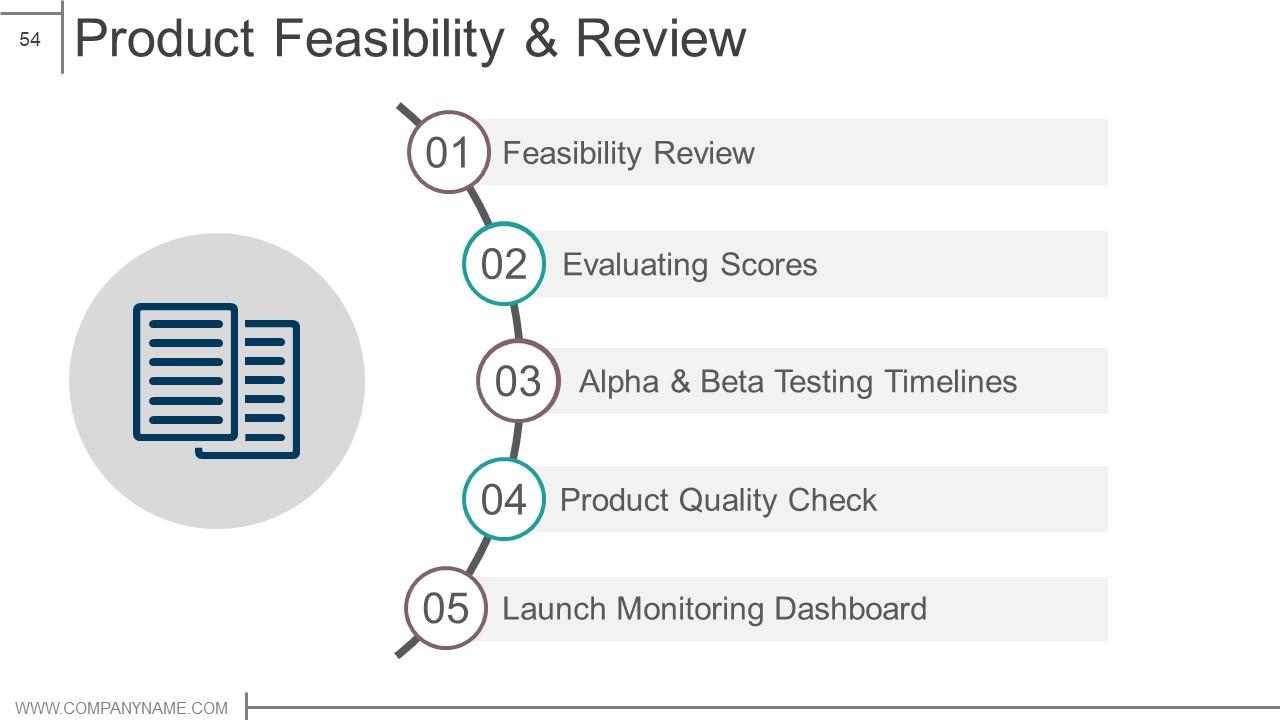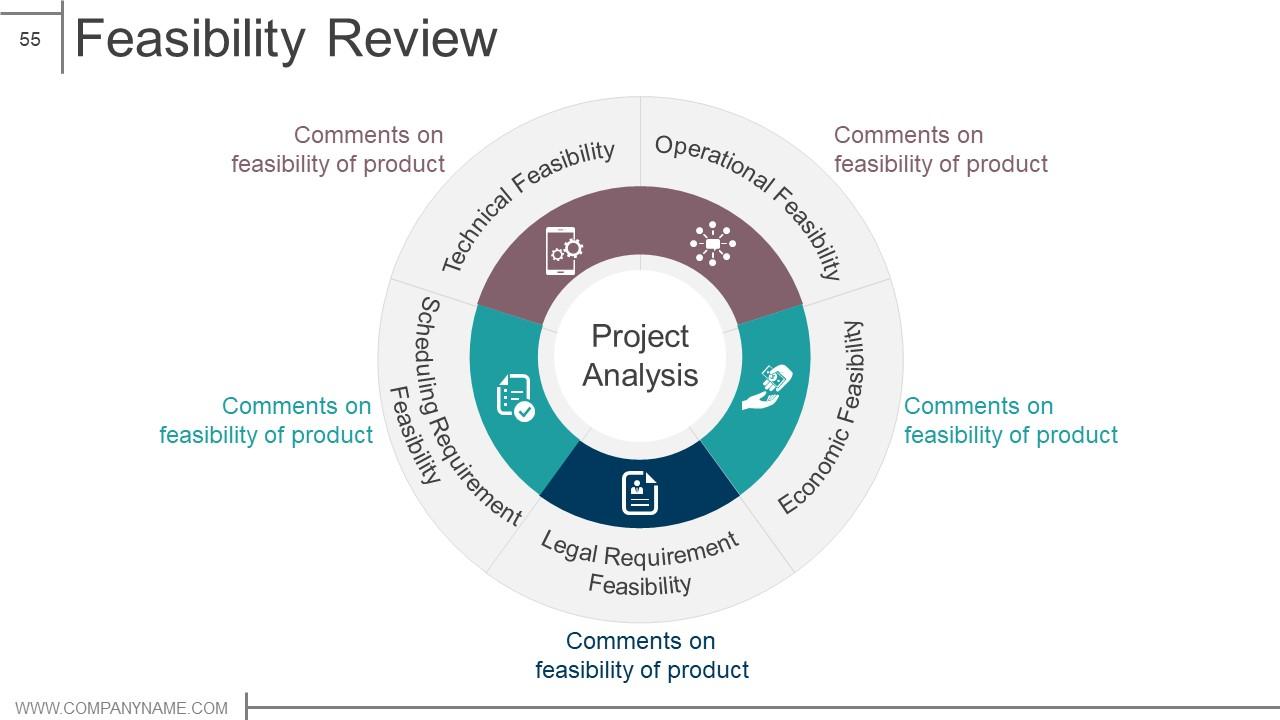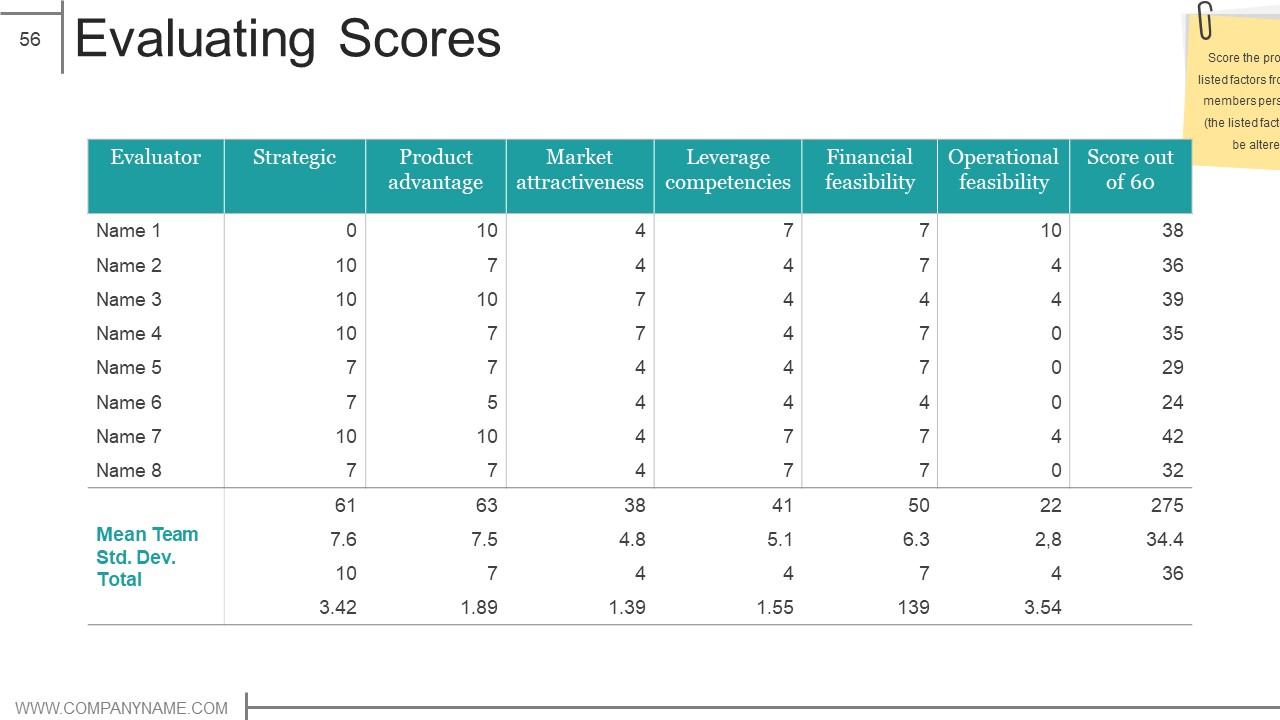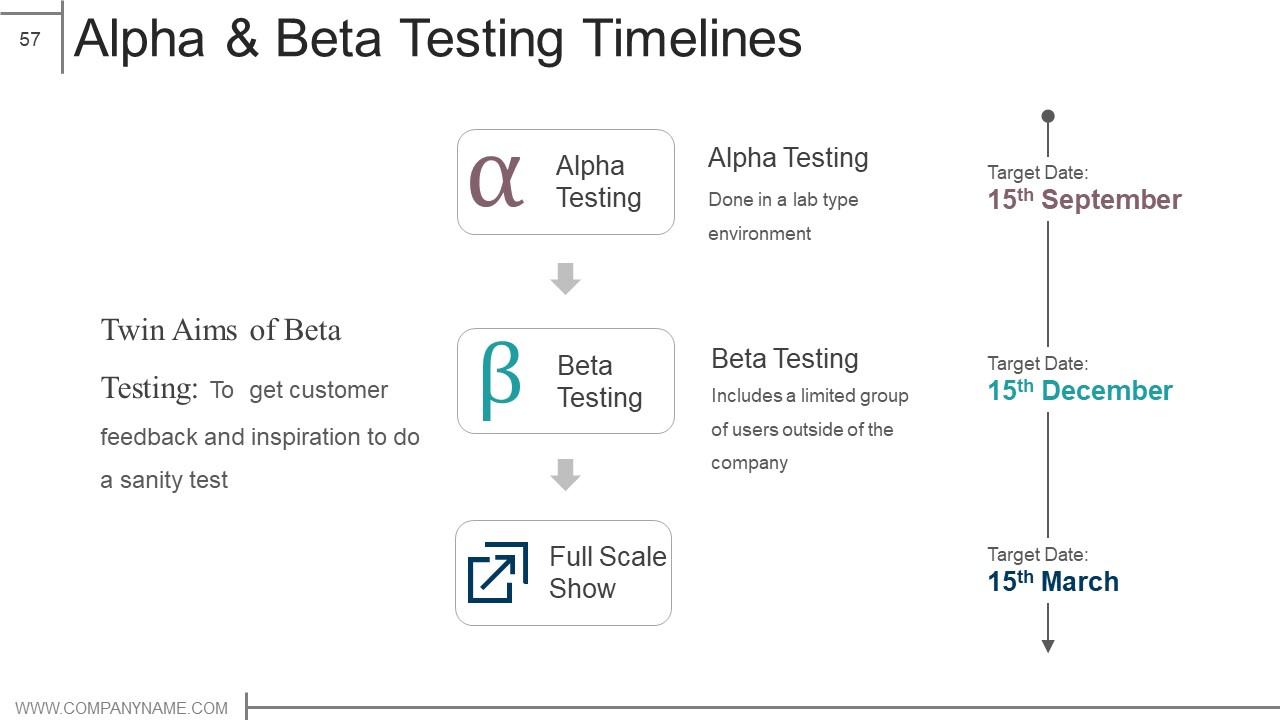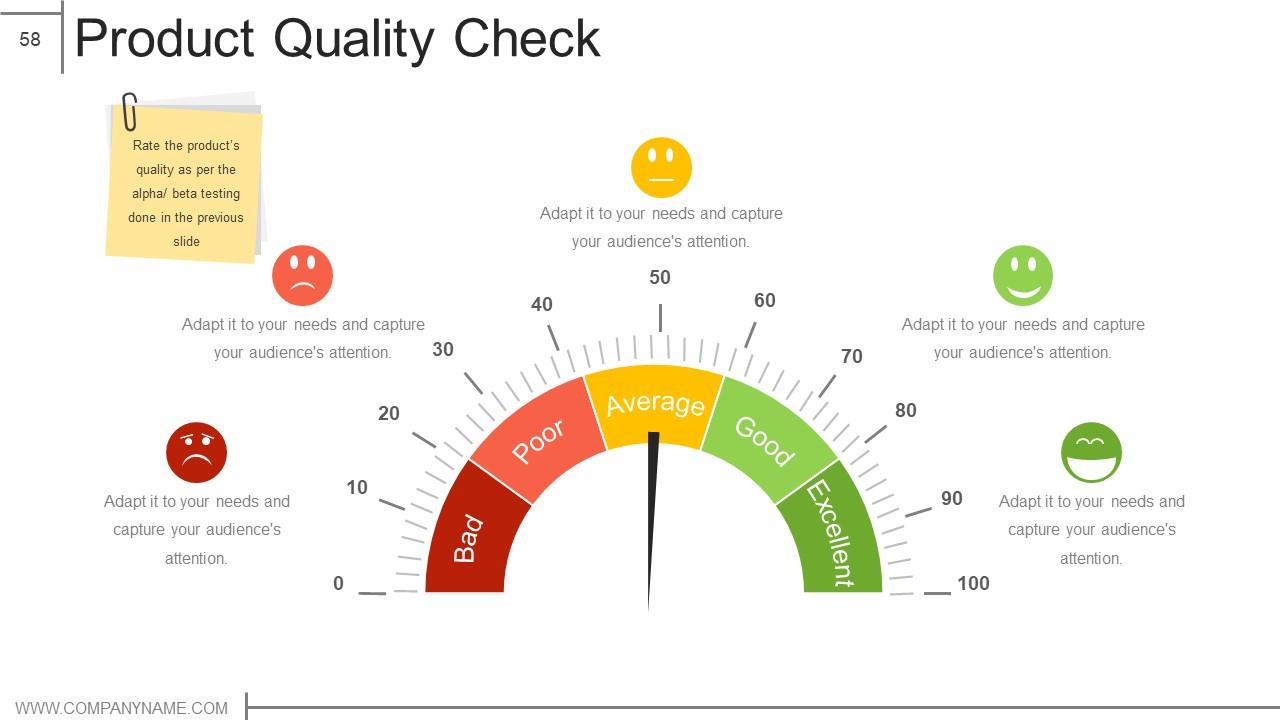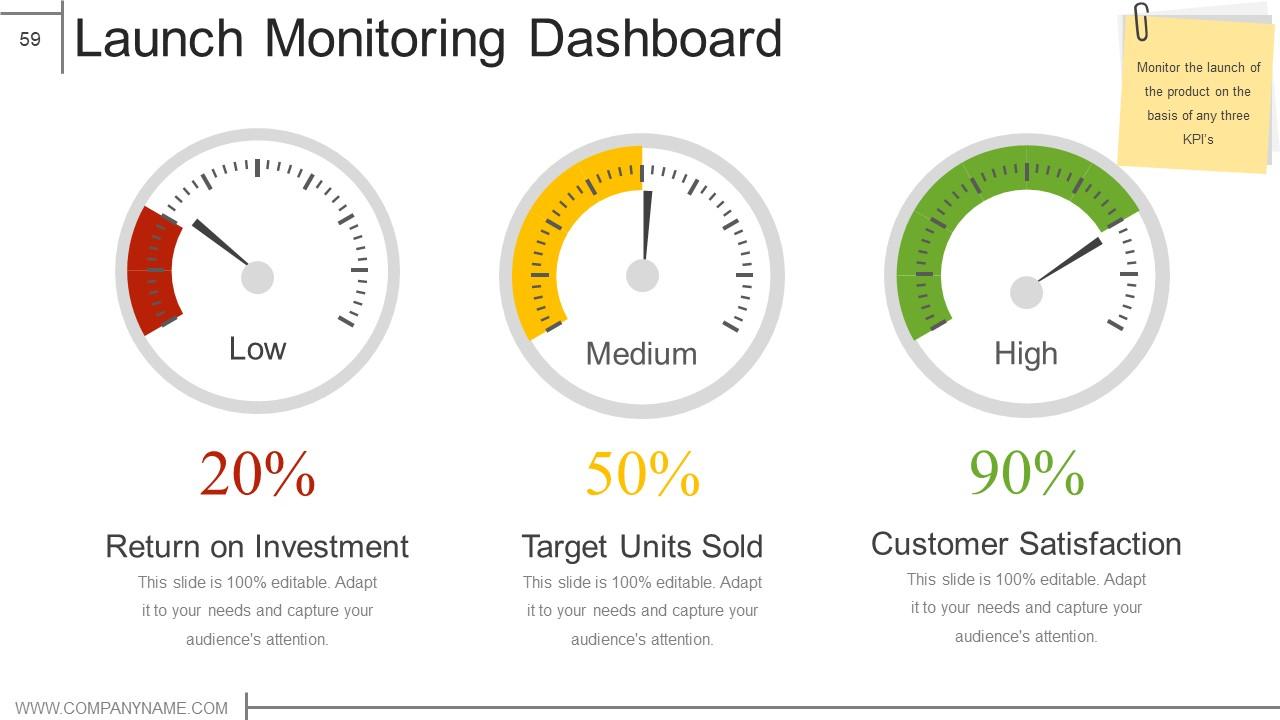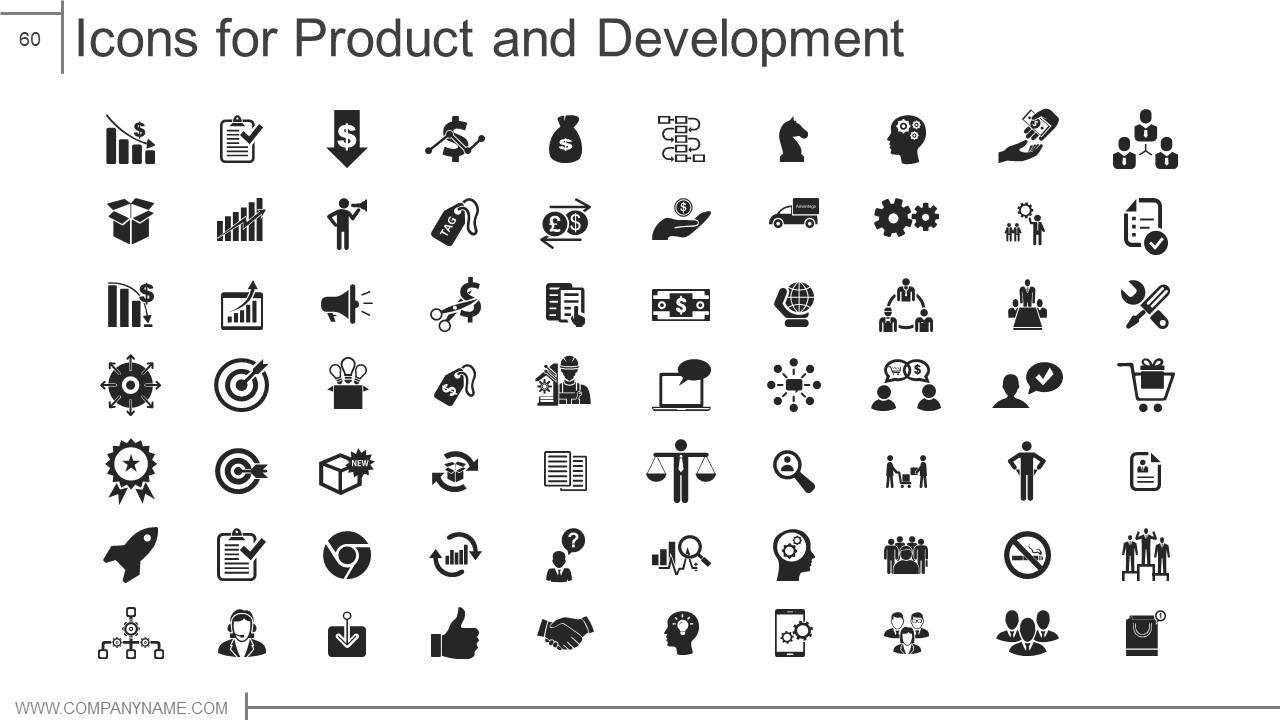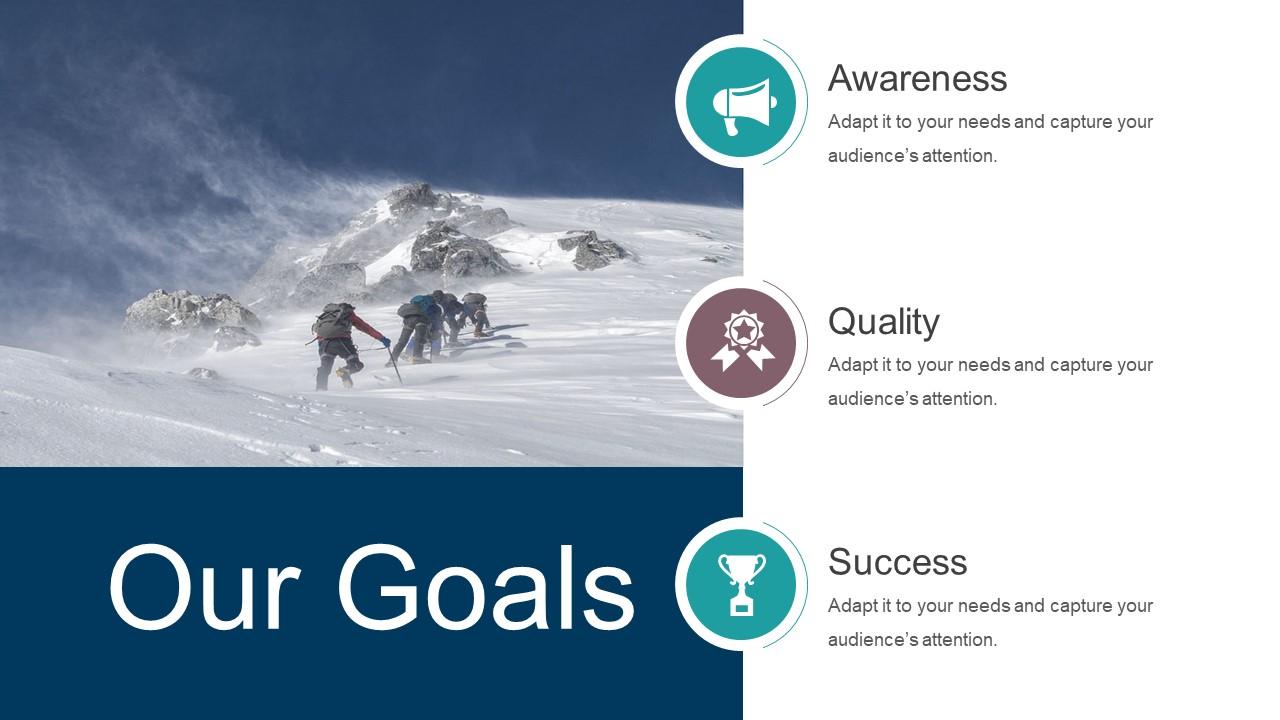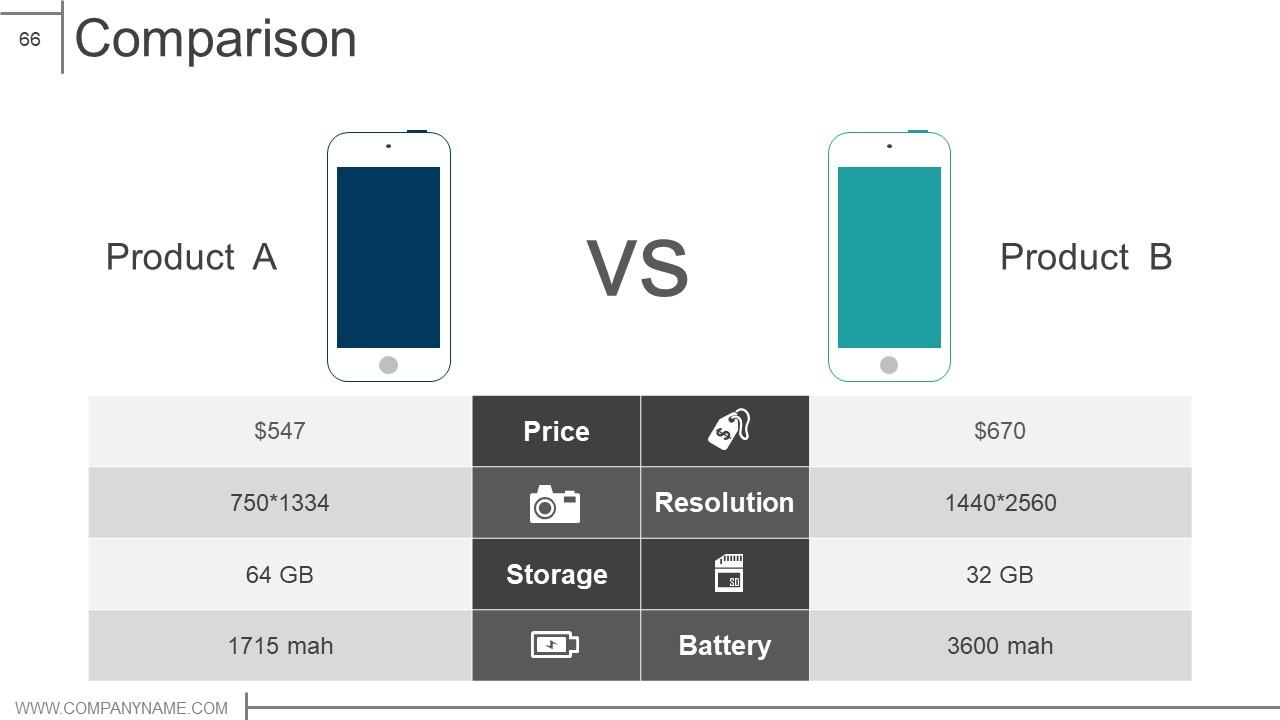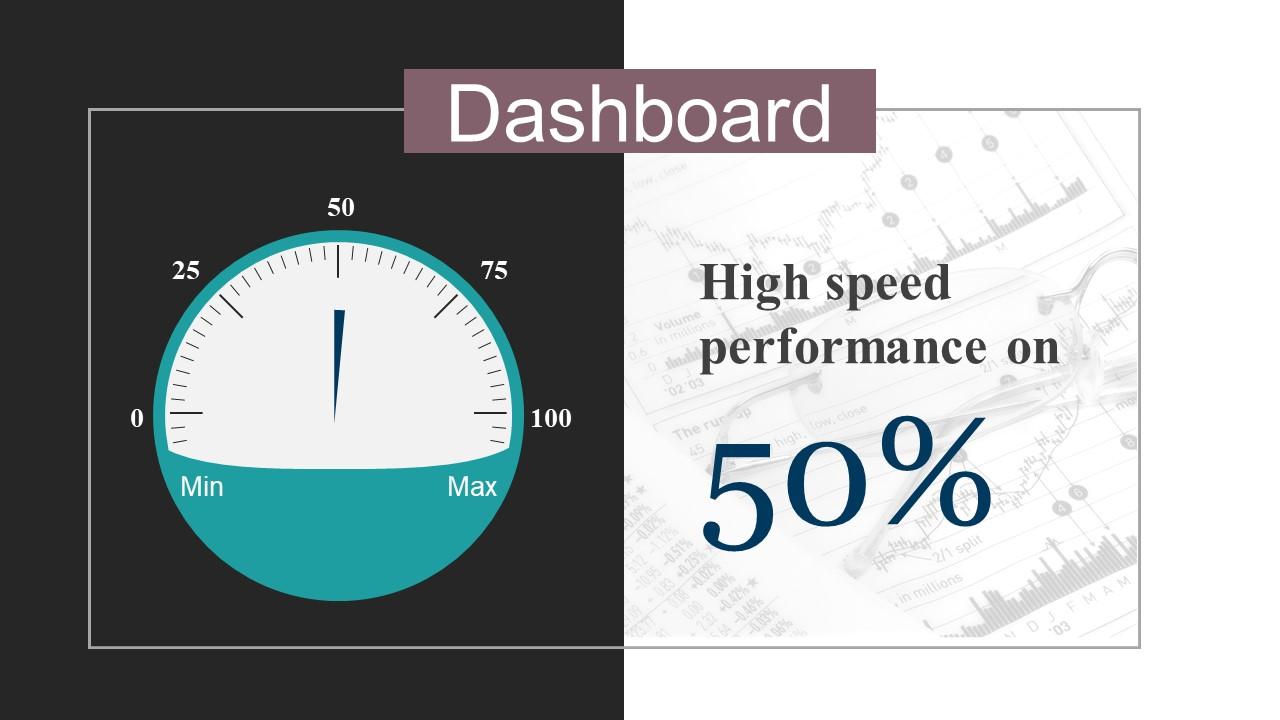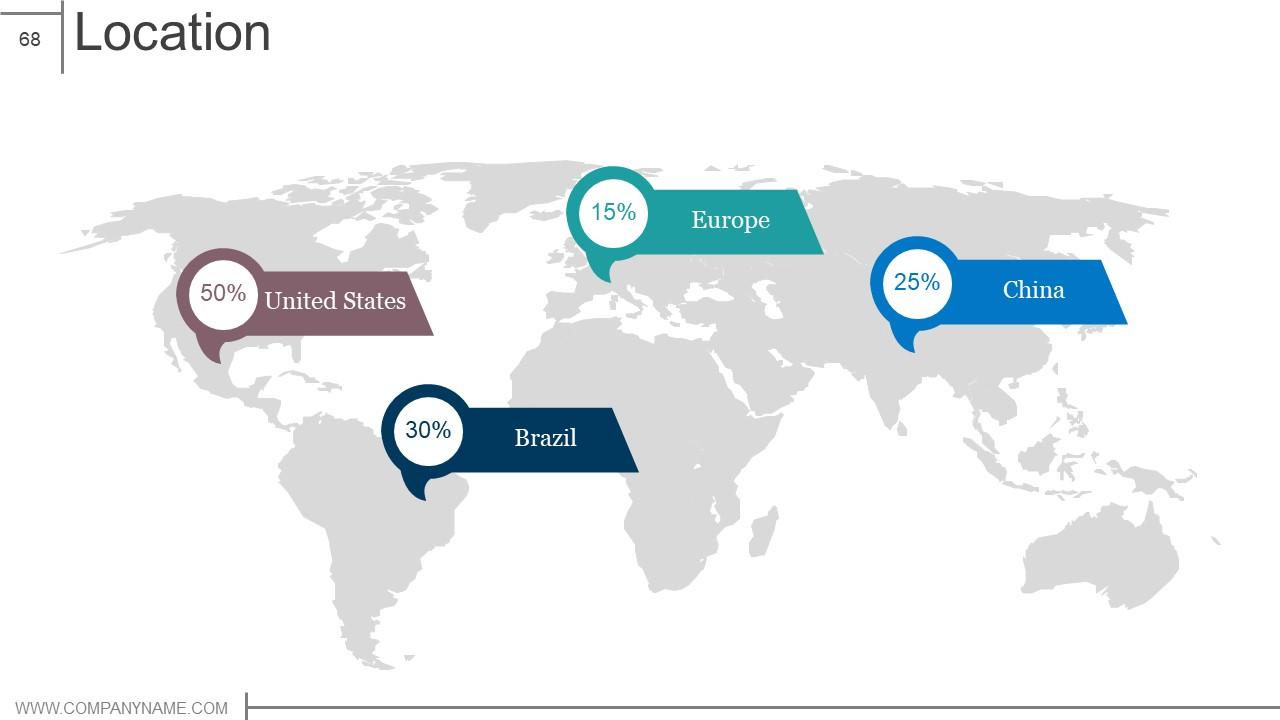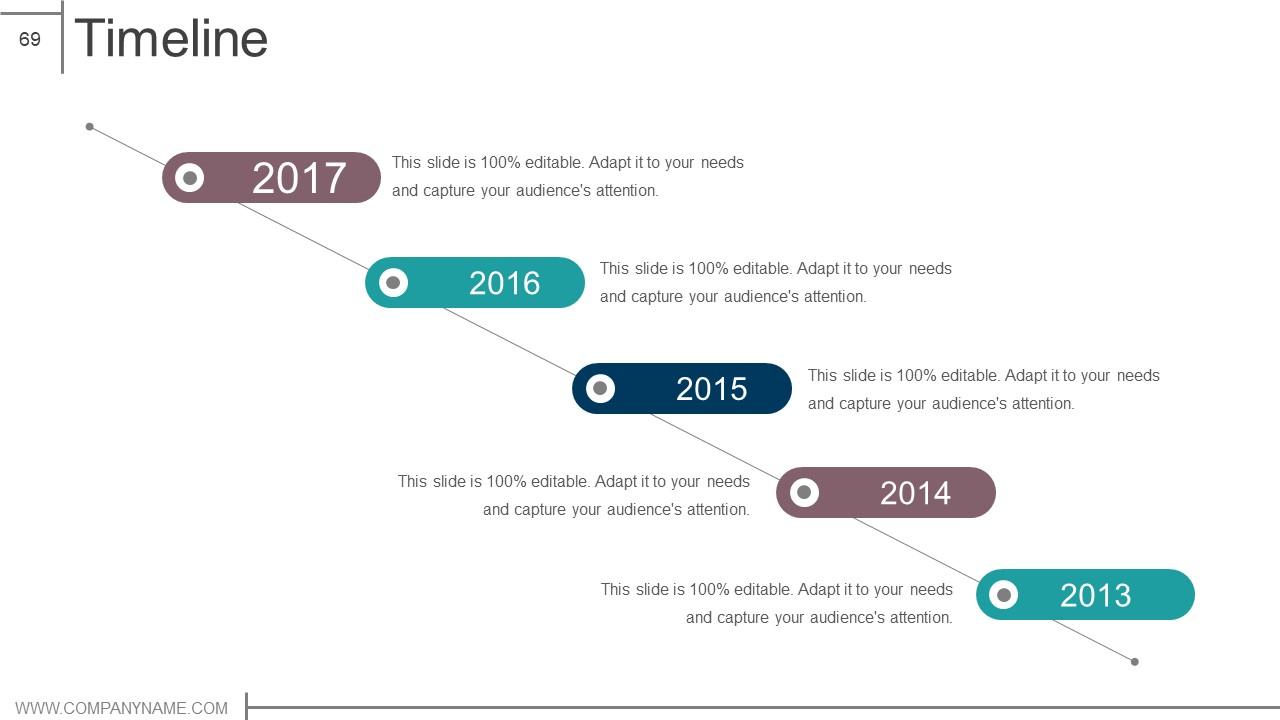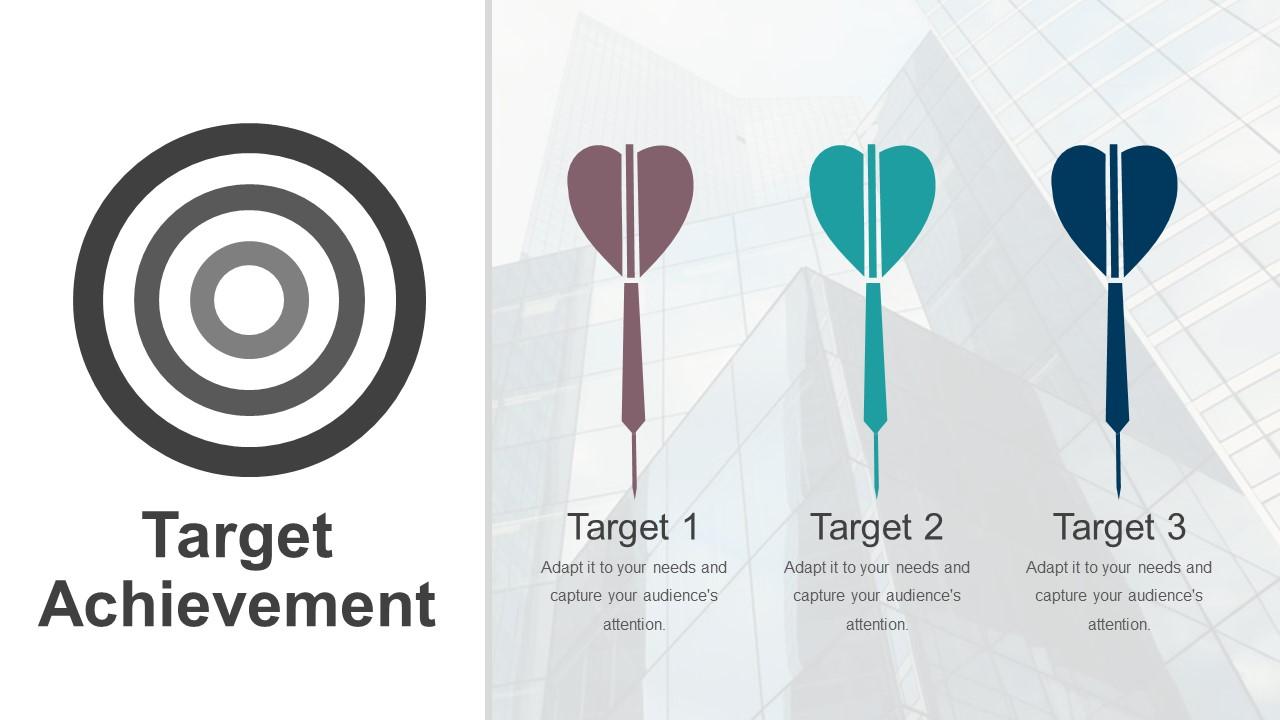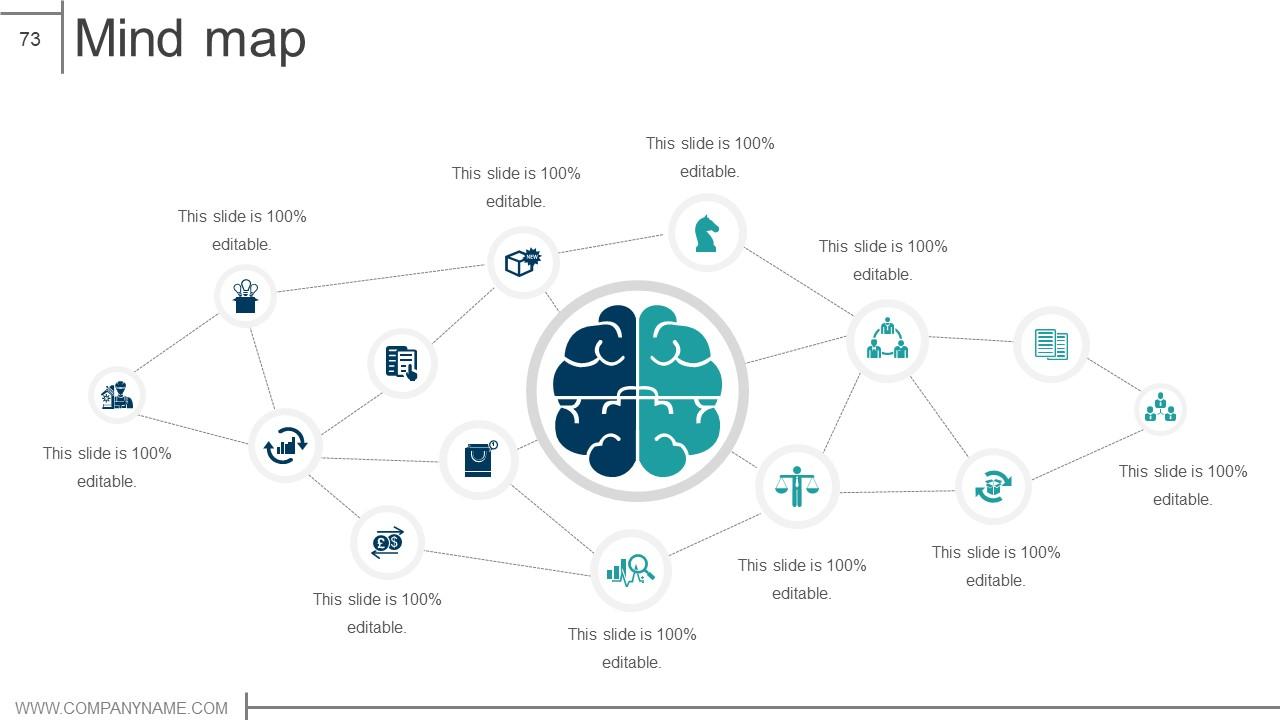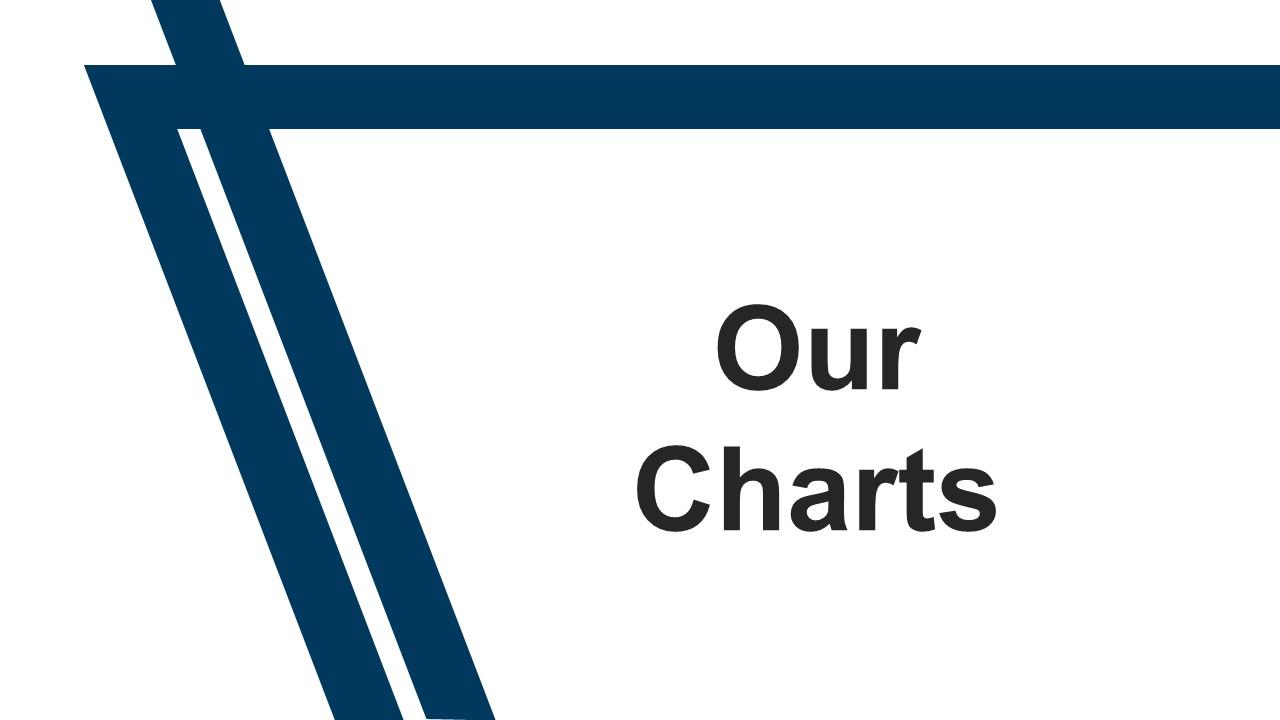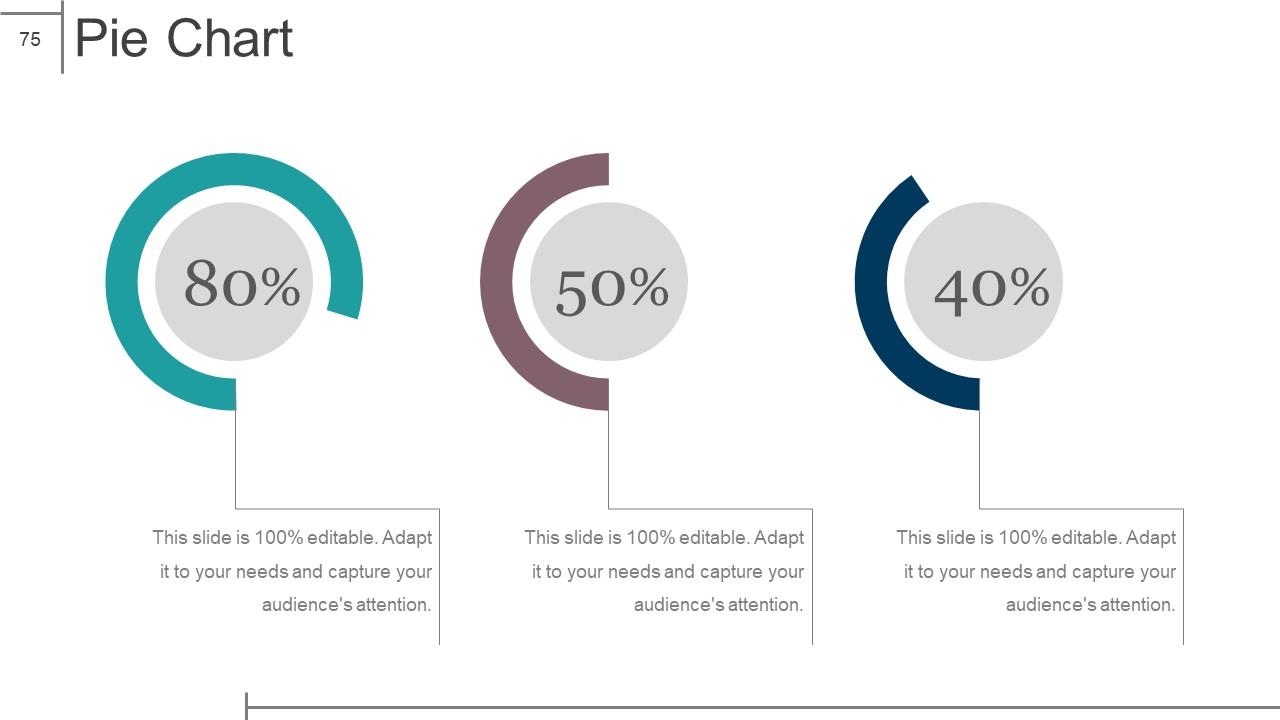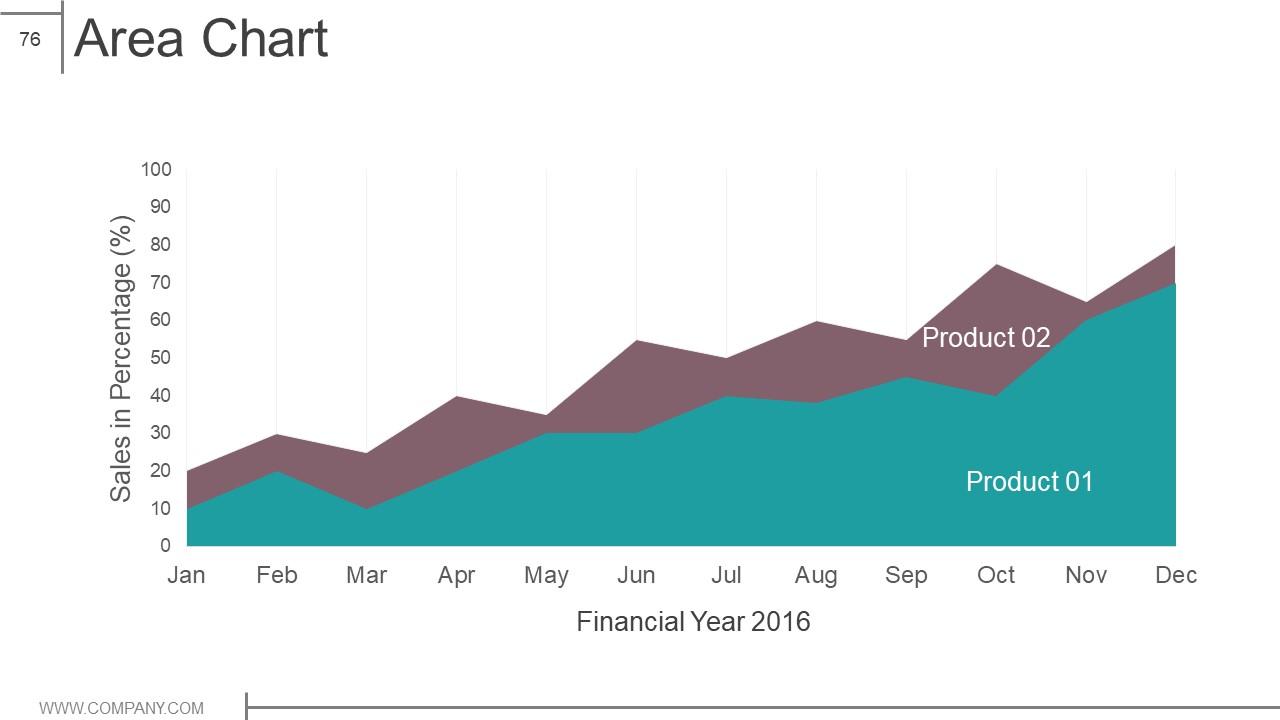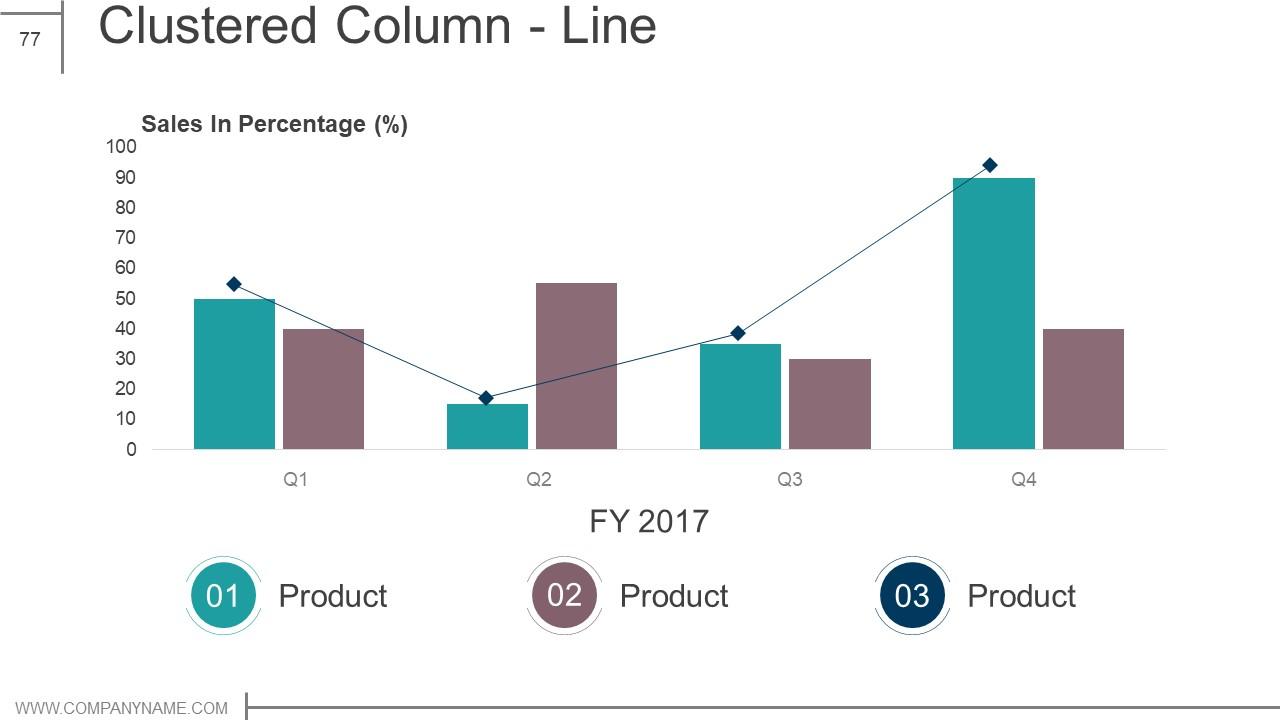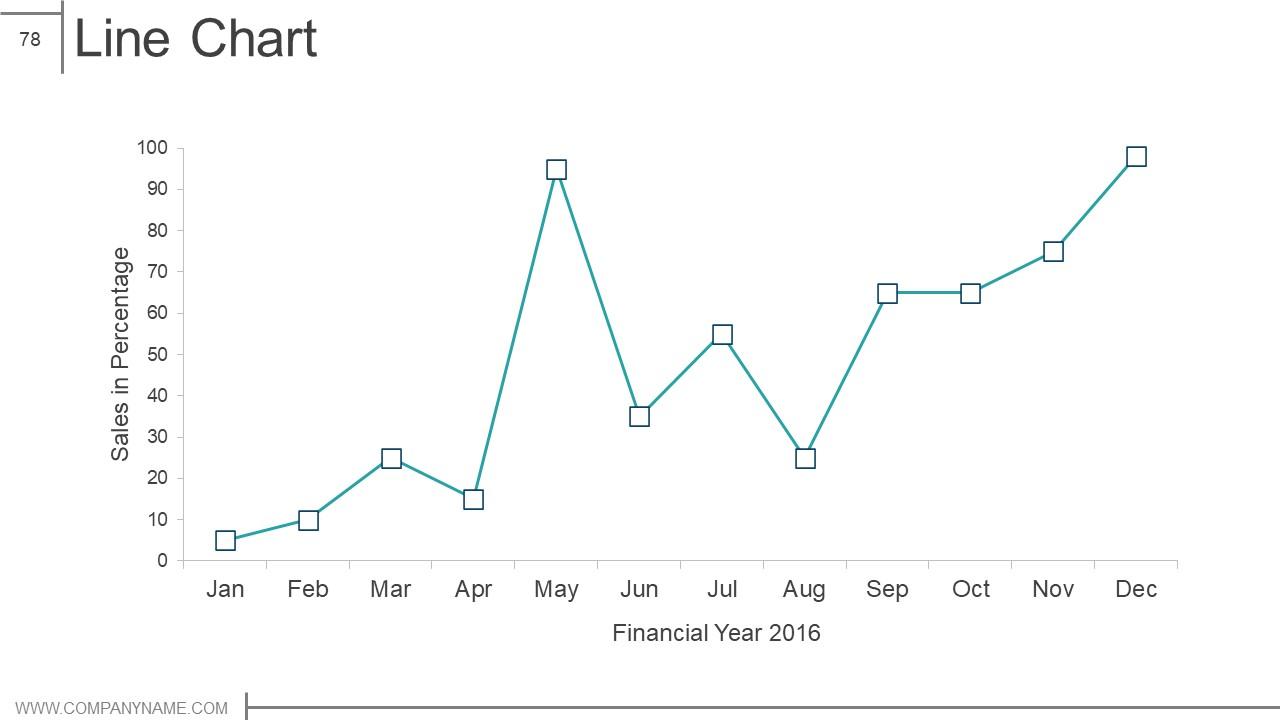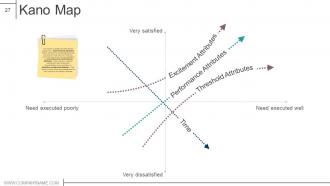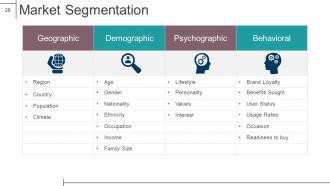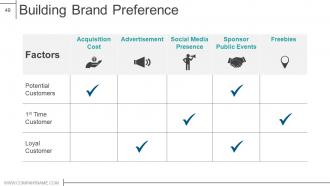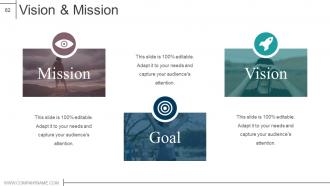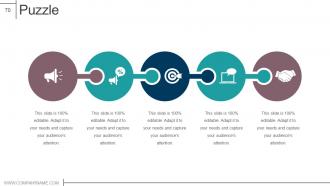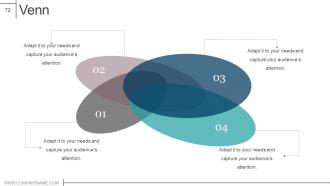Product design and development powerpoint presentation slides
If you have thought of new product launch, our content-ready product design & development PowerPoint presentation is an apt choice to vent out your ideas and thoughts. This Product launch plan presentation slide includes multiple slides such as distribution mapping, competitive strategies, market attractiveness, development manufacturing, operations and business marketing plans, digital marketing communication plans, budgeting template, repositioning strategy, building brand preference, operations cost analysis, marketing and launch cost analysis, business and financial analysis, feasibility and review, evaluating scores, alpha & beta testing timelines, quality check and launch monitoring dashboard etc. You are just a few clicks away to put up these PPT templates into your presentation. The product management presentation designs can also be used for a couple of subjects such as market entry strategy, product promotion, launch plan, product market strategy, brand management and market penetration. Download our product design & development PPT graphics to make impressive presentation. Establish your authority with our Product Design And Development Powerpoint Presentation Slides. Display ability to control.
If you have thought of new product launch, our content-ready product design & development PowerPoint presentation is an apt..
- Google Slides is a new FREE Presentation software from Google.
- All our content is 100% compatible with Google Slides.
- Just download our designs, and upload them to Google Slides and they will work automatically.
- Amaze your audience with SlideTeam and Google Slides.
-
Want Changes to This PPT Slide? Check out our Presentation Design Services
- WideScreen Aspect ratio is becoming a very popular format. When you download this product, the downloaded ZIP will contain this product in both standard and widescreen format.
-

- Some older products that we have may only be in standard format, but they can easily be converted to widescreen.
- To do this, please open the SlideTeam product in Powerpoint, and go to
- Design ( On the top bar) -> Page Setup -> and select "On-screen Show (16:9)” in the drop down for "Slides Sized for".
- The slide or theme will change to widescreen, and all graphics will adjust automatically. You can similarly convert our content to any other desired screen aspect ratio.
Compatible With Google Slides

Get This In WideScreen
You must be logged in to download this presentation.
PowerPoint presentation slides
This PowerPoint presentation incorporates 79 slides. This presentation is valuable for team leaders, company managers, business developers, and product managers. Users can easily customize PowerPoint designs as all of these are 100 % editable in PowerPoint. PowerPoint presentation templates are compatible with Google Slides. All PPT slides are accessible in both standard and widescreen formats.
People who downloaded this PowerPoint presentation also viewed the following :
Video for Product design and development powerpoint presentation slides
Content of this Powerpoint Presentation
Slide 1: This slide introduces Product Design and Development. State Your Company Name and get started.
Slide 2: This is an Agenda slide. State your agendas here.
Slide 3: This slide showcases Outline consisting of- Product Idea Screening, New Product Analysi, Product Lifecycle, Tools & Technique, Market Analysis, Development Plans, Branding & Repositioning, Cost Analysis, Product Feasibility & Review.
Slide 4: This slide showcases Product Idea Screening displaying- New Product Introduction, New Product Detailed Overview, Understanding Customer Needs, External Sources of Ideas, Internal Sources of Ideas, Product Roadmap.
Slide 5: This slide shows New Product Introduction Explain the product idea with- Technology used, Benefits, and Product Details.
Slide 6: This slide presents New Product Detailed Overview displaying- Strategic, Product Advantage, Market attractiveness, Synergies, Technical Feasibility, Profitability Analysis. This step is crucial to ensure that unsuitable ideas are rejected as soon as possible as Ideas need to be considered objectively
Slide 7: This slide shows Understanding Customer Needs displaying- When they buy, What they do, Understand your customer, What they expect of you, How they buy.
Slide 8: This slide shows External Source of New Product Ideas showing- Market Research, Competitors, Learning From, Long Range Studies, Market Gap Analysis, Consumer Activity Analysis. Some possible sources of data has been listed out to give you a fair idea, and it can be altered as per your requirement.
Slide 9: This slide shows Internal Sources of New Product Ideas with- Management: Strategic Planning, Marketing Manager. Research and Engineering: Product Testing, Product Enhancement, Brainstorming, Accident. Employee Suggestions, Innovation Group Meetings, Stockholders, Sales Force.
Slide 10: This slide shows a Product Roadmap with icon imagery.
Slide 11: This slide also shows a Product Roadmap with icon imagery.
Slide 12: This slide showcases New Product Analysis displaying- Category Analysis, Category Analysis - Example Slide, Porter’s Five Forces Analysis, Detailed Analysis.
Slide 13: This slide shows Detailed Analysis with- Strengths, Features, Weaknesses, Benefits to be assessed.
Slide 14: This slide presents Category Analysis with- Consumption Drivers, Positioning Claims/trends, Price, Packing Formats Types & Materials. Once the concept has been tested and finalized, a business case needs to be put together to assess whether the new product/service will be profitable.
Slide 15: This slide showcases Category Analysis – Example Slide displaying- Product, Details, Claim, Positioning claims/trends, Price, Consumption drivers, Packaging, Promotion.
Slide 16: This slide shows Porter’s Five Forces Model displaying Intensity of Rivalry, Barriers to Entry, Substitutes, Power, Bargaining Power of suppliers, Bargaining Power of Buyer. Its a framework for analyzing the level of competition within an industry and business strategy development to derive five forces that determine the competitive intensity and therefore the attractiveness of an industry.
Slide 17: This slide shows Product Life Cycle stating- Decline Stage, Maturity Stage, Growth Stage, Introduction Stage.
Slide 18: This slide presents Product Life Cycle Stages in crest graph form stating- Decline, Growth, Maturity, Introduction.
Slide 19: This slide showcases the Introduction Stage stating- Cost, Targets, Competition, Profits, Sales. This stage of the cycle could be the most expensive for a company launching a new product in which these 5 factors play a key role.
Slide 20: This slide presents the Growth Stage stating- Product Quality, Pricing, Distribution Channels, Promotions. The growth stage is typically characterized by a strong growth in sales and profits, and because the company can start to benefit from economies of scale in production, profit margins will increase.
Slide 21: This slide presents the Maturity Stage stating- Costs (Low cost per customer), Profits (High Profits), Marketing Objectives (Maximize profit while defending market Share), Product (Diversify Brand & Models), Price (Price to match or best competitors), Distribution (Build more intensive distribution), Advertising (Stress brand differences & benefits) Sales (Peak Sales).
Slide 22: This slide shows the Decline Stage showing- Discontinue The Product, Sales (Declining Sales), Costs (Low cost per customer), Profits (Declining Profits), Marketing Objectives (Reduce expenditure & milk the brand), Product (Phase out weak items), Distribution (Phase out unprofitable outlets), Advertising (reduce only to loyal customers), Price (Cut Price).
Slide 23: This slide showcases Tools & Techniques such as- Ansoff Matrix, Empathy Map, Kano Model, BCG Matrix.
Slide 24: This is a BCG Matrix slide.
Slide 25: This is Ansoff Matrix showing- Market Development Diversification Penetration Product Development Use the matrix to help you consider your strategic options and determine the necessity for new product development. For example, your market analysis may conclude that there is plenty of opportunity for selling your current range of products to your current range of customers by penetrating the market with promotional strategies, such as multi-buy offers, to build loyalty.
Slide 26: This is Empathy Map slide showing- Gain Wants/needs Measure of success Pain Feels Frustration First, brainstorm to come up with all the possible customer segments to whom you might want to sell your product.
Slide 27: This is a Kano Map slide showing- Need executed poorly, Need executed well and Very satisfied, Very dissatisfied Time as calculating factors for Threshold Attributes, Excitement Attributes and Performance Attributes.
Slide 28: This is a Market Analysis slide showing- Product Market Mapping, Competitive Strategies, Market Attractiveness, Market Segmentation.
Slide 29: This slide showcases Market Segmentation in tabular form.
Slide 30: This slide shows Geographic Segmentation in world map image form.
Slide 31: This slide shows Geographic Segmentation in US map image form.
Slide 32: This slide shows Demographic Segmentation in creative human imagery form.
Slide 33: This slide shows Psychographic Segmentation stating- Opinions, Attitudes, Activities, Behaviors, Values, Interests as factors to consider.
Slide 34: This slide shows Behavioral Segmentation showing- Target Market, Aware, Unaware, Not tried, Tried, Negative opinion, Neutral, Favorable opinion, Rejector, Not yet repeated, Repeated, Light to other, Switcher, Loyal to other brand, Light user, Regular user, Heavy user.
Slide 35: This slide shows Behavioral Segmentation in creative human imagery form.
Slide 36: This slide shows Product Market Mapping displaying- Market attractiveness Competitive Strength Product Market Map Move the circles and the text boxes as per your company’s competitive strength & market attractiveness.
Slide 37: This slide showcases Competitive Strategies in tabular form showing- Overall Low-cost Provider Strategy: When a firm sets out to become the low cost producer in its industry. Focused Low Cost Strategy: When a firm sets out to become the low cost producer in its industry. Broad Differentiation strategy: When a firm seeks to be unique in its industry along some dimensions that are widely valued by buyers. Focused Differentiation Strategy: When a firm seeks differentiation in its target segment.
Slide 38: This slide showcases Market Attractiveness matrix displaying- High Attractiveness, Medium Attractiveness, Low Attractiveness, Business Position, Market Attractiveness. Move the circles as per your company’s market attractiveness & business position.
Slide 39: This slide shows Development Plans displaying- Manufacturing Plan, Operations Plan, Marketing Launch Plan, Marketing Communication Plan, Digital Marketing Plan, Budgeting Plan.
Slide 40: This slide showcases Manufacturing Plan.
Slide 41: This slide displays Operations Plan in tabular form.
Slide 42: This slide shows Marketing Launch Plan showing- Update the website, Create press release, Garner endorsements, Use twitter, Build demand, Use advertising, Attend tradeshows, Create email contests.
Slide 43: This slide presents Marketing Communication Plan displaying- Personal Selling, Direct Marketing, Advertising, Public Relations, Sales Promotion.
Slide 44: This slide presents Digital Marketing Plan.
Slide 45: This slide presents a Budgeting Template.
Slide 46: This slide shows Branding & Repositioning displaying- Decline Stage, Maturity Stage, Growth Stage, Repositioning Strategy, Repositioning a Product.
Slide 47: This slide presents Repositioning a Product showing- To New Consumers, Among Existing Customers as factors to be discussed.
Slide 48: This slide showcases Repositioning Strategy showing- Target Market, Product, Image Repositioning, Intangible Repositioning, Tangible Repositioning, Product Repositioning, Rationale behind the strategy.
Slide 49: This slide shows Building Brand Preference in tabular form.
Slide 50: This slide presents Cost Analysis with- Production & Operation Cost Analysis Marketing & Launch Cost Analysis Business & Financial Analysis
Slide 51: This slide shows Production & Operation Cost Analysis in tabular form.
Slide 52: This slide shows Marketing & Launch Cost Analysis in tabular form.
Slide 53: This slide presents Business & Financial Analysis in tabular form.
Slide 54: This slide shows Product Feasibility & Review with- Launch Monitoring Dashboard, Product Quality Check, Alpha & Beta Testing Timelines, Evaluating Scores, Feasibility Review.
Slide 55: This slide showcases Feasibility Review displaying- Comments on feasibility of product for Operational Feasibility, Economic Feasibility, Legal Requirement, Technical Feasibility, Scheduling Requirement Feasibility under Project Analysis.
Slide 56: This is Evaluating Scores slide in tabular form. Score the product’s listed factors from team members perspective (the listed factors can be altered).
Slide 57: This slide showcases Alpha & Beta Testing Timelines to be displayed.
Slide 58: This is Product Quality Check slide. Rate the product’s quality as per the alpha/ beta testing done in the previous slide.
Slide 59: This slide shows Launch Monitoring Dashboard showing- Return on Investment, Target Units Sold, Customer Satisfaction, Monitor the launch of the product on the basis of any three KPI’s.
Slide 60: This is Icons for Product and Development to be used as per requirement.
Slide 61: This slide is titled Additional Slides to move forward. You can change the slide content as per need.
Slide 62: This slide showcases Vision and Mission. Show your company vision, mission and goal here
Slide 63: This slide showcases Our team with name, designation and image boxes.
Slide 64: This is an About Us slide. State team/company specifications here.
Slide 65: This is Our Goals slide. State your goals here.
Slide 66: This is a Comparison slide for comparing entities/products etc. here.
Slide 67: This is a Dashboard slide to state metrics, kpis etc.
Slide 68: This is a Location slide of world map image to show global presence, growth etc.
Slide 69: This is a Timeline slide to show evolution, growth, milestones etc.
Slide 70: This is a Puzzle pieces image slide to show information, specifications etc.
Slide 71: This is a Target Achievement image slide. State targets, etc. here.
Slide 72: This is a Venn diagram image slide to show information, specifications etc.
Slide 73: This is a Mind map image slide to show information, segregation, specifications etc.
Slide 74: This slide is titled Our Charts. You may change/alter the slide content as desired.
Slide 75: This is a Pie Chart slide to show product/entity comparison, specifications etc.
Slide 76: This is an Area Chart slide to show product/entity comparison, specifications etc.
Slide 77: This is a Clustered Column - Line graph slide to show product/entity comparison, specifications etc.
Slide 78: This is a Line Chart slide to show product/entity comparison, specifications etc.
Slide 79: This is a Thank You slide with Address# street number, city, state, Contact Number, Email Address.
Product design and development powerpoint presentation slides with all 79 slides:
Your intelligence will get them glued due to our Product Design And Development Powerpoint Presentation Slides. It will get their brains hooked.
-
Great product with effective design. Helped a lot in our corporate presentations. Easy to edit and stunning visuals.
-
Great designs, really helpful.



